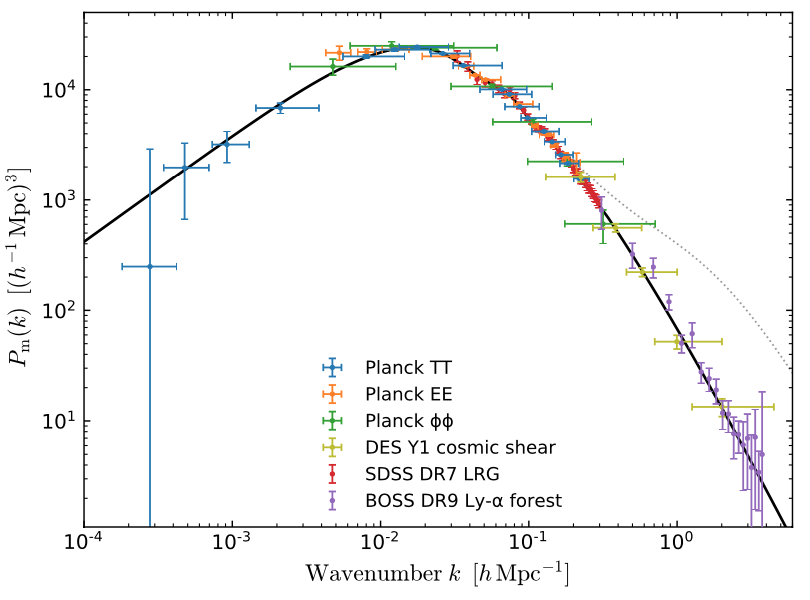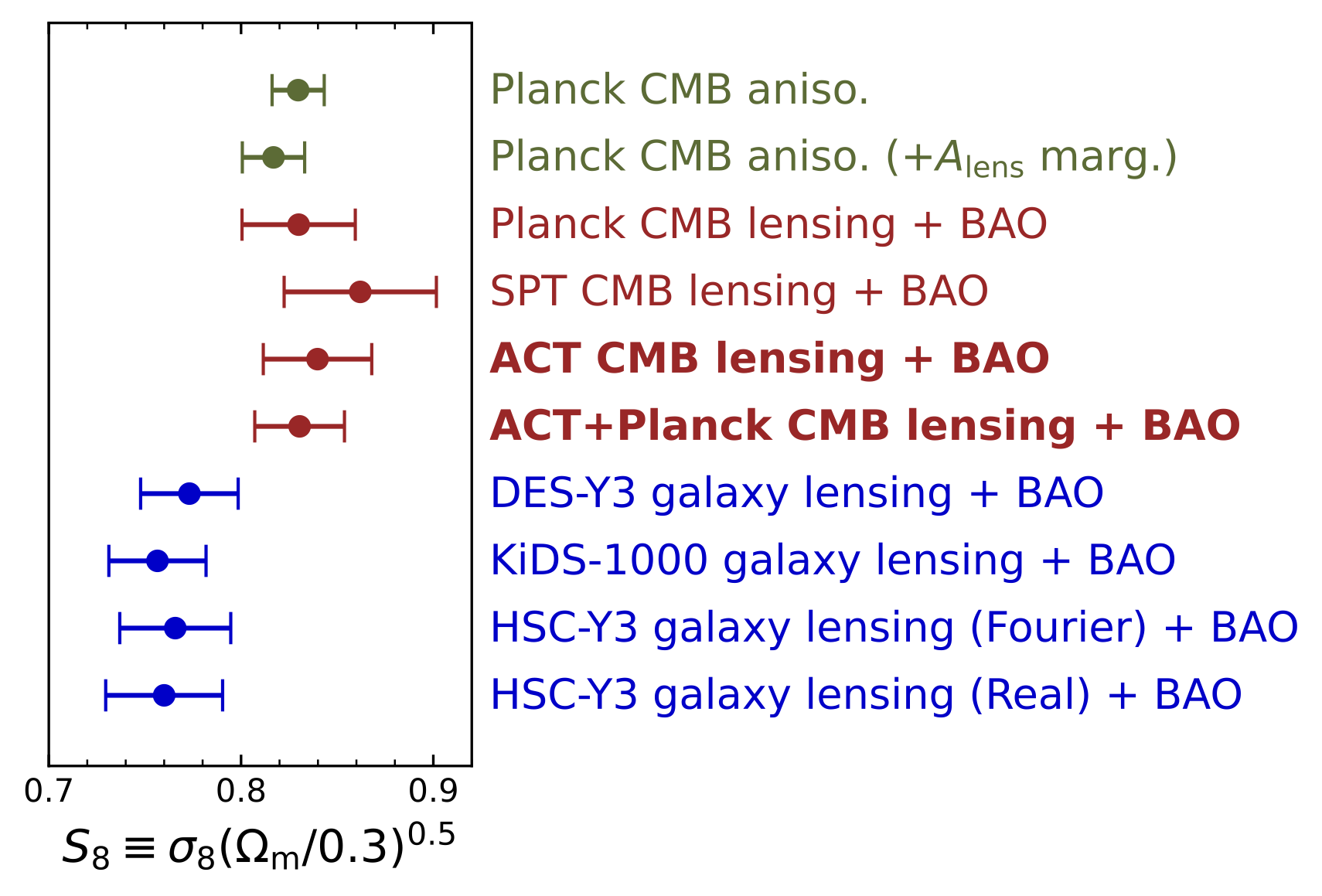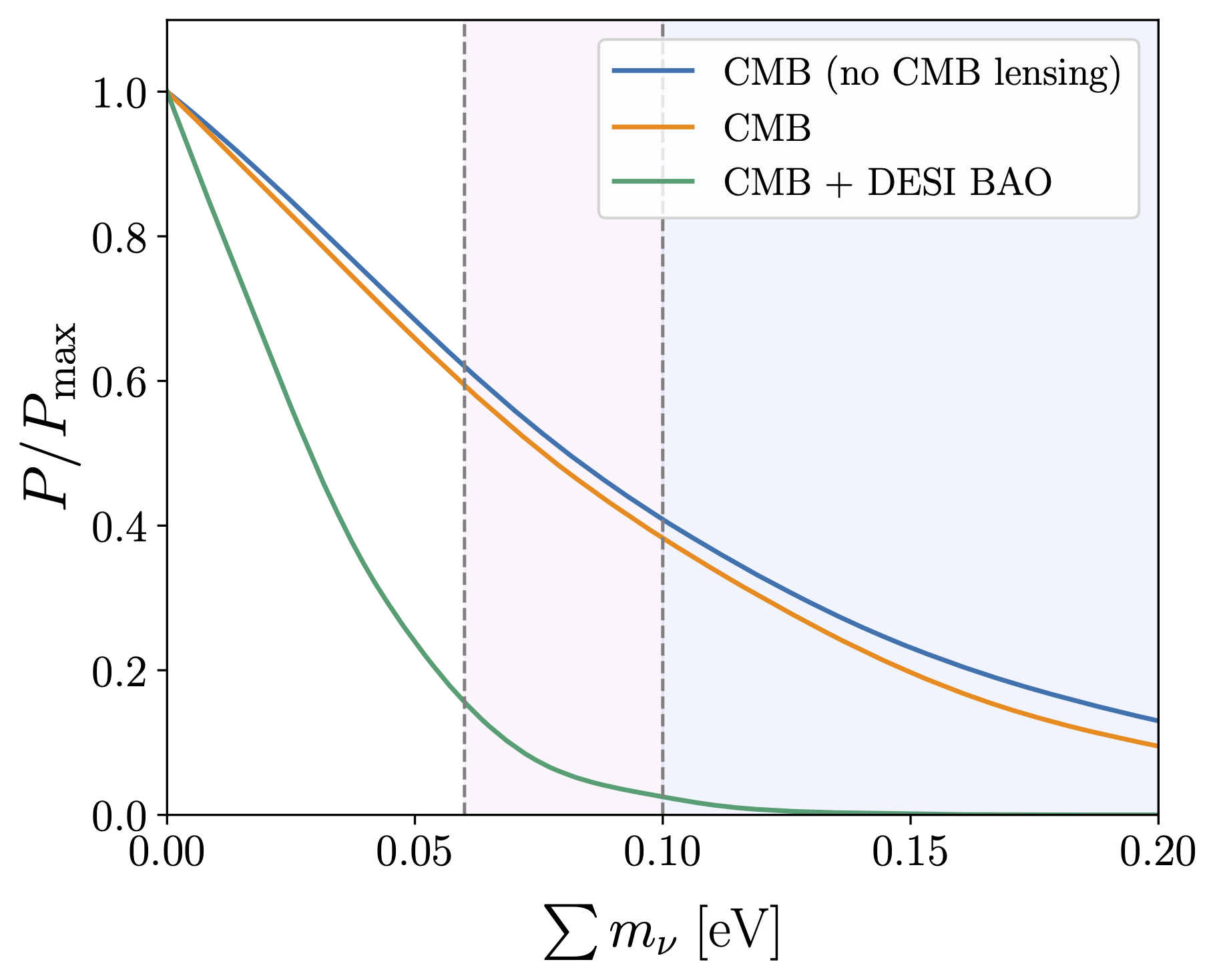Cosmology with SPT-3G
CosmoStat, CEA Paris-Saclay
on behalf of the SPT-3G collaboration
ESLAB Euclid Symposium
March 25, 2025
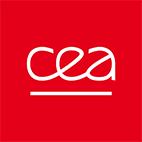


Outline
Cosmology with the Cosmic Microwave Background (CMB)
The South Pole Telescope (SPT) and the SPT-3G camera
- Recent and upcoming 2019+2020 SPT-3G results:
- Three analyses: MUSE, TT/TE/EE, and CMB lensing (\(\phi\phi\))
- Beyond 2019+2020: the Ext-10k survey
- SPT-3G and Euclid
Cosmology with the CMB
most distant observable electromagnetic radiation \(\implies\) early-Universe physics
illuminates the Universe’s evolution: reionization, structure growth, astrophysics..
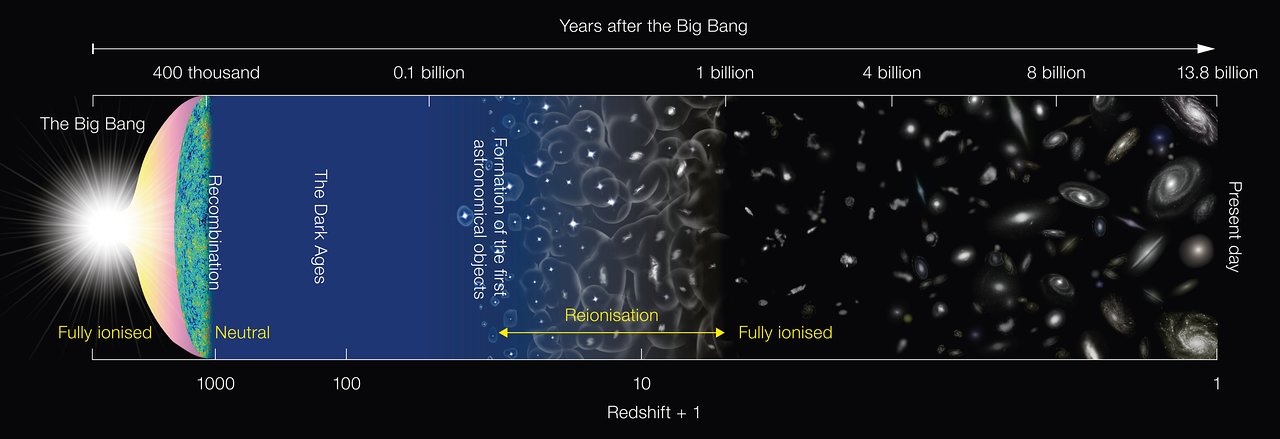
NAOJ
Cosmology with the CMB
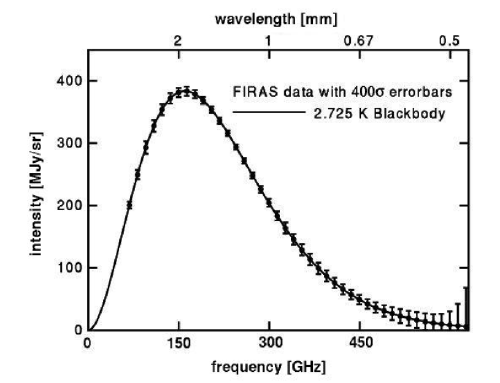
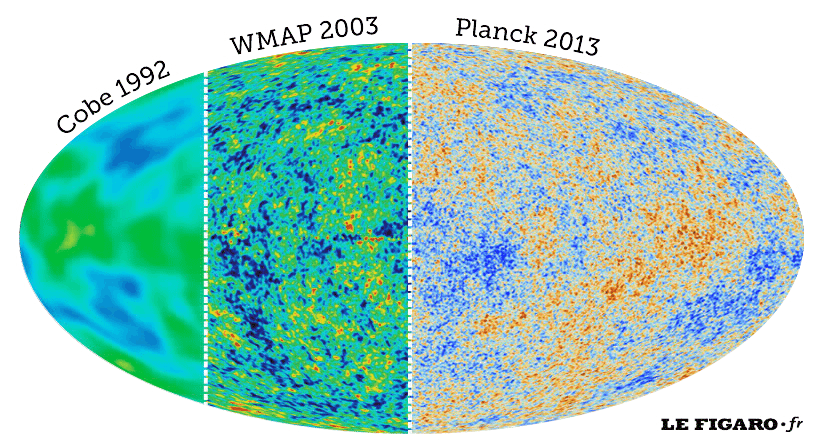
Turner (2022): The Road to Precision Cosmology
\(\Lambda\)CDM Concordance
six-parameter model predicts a wide range of cosmic observables:
\(\Lambda\)CDM Phenomenology
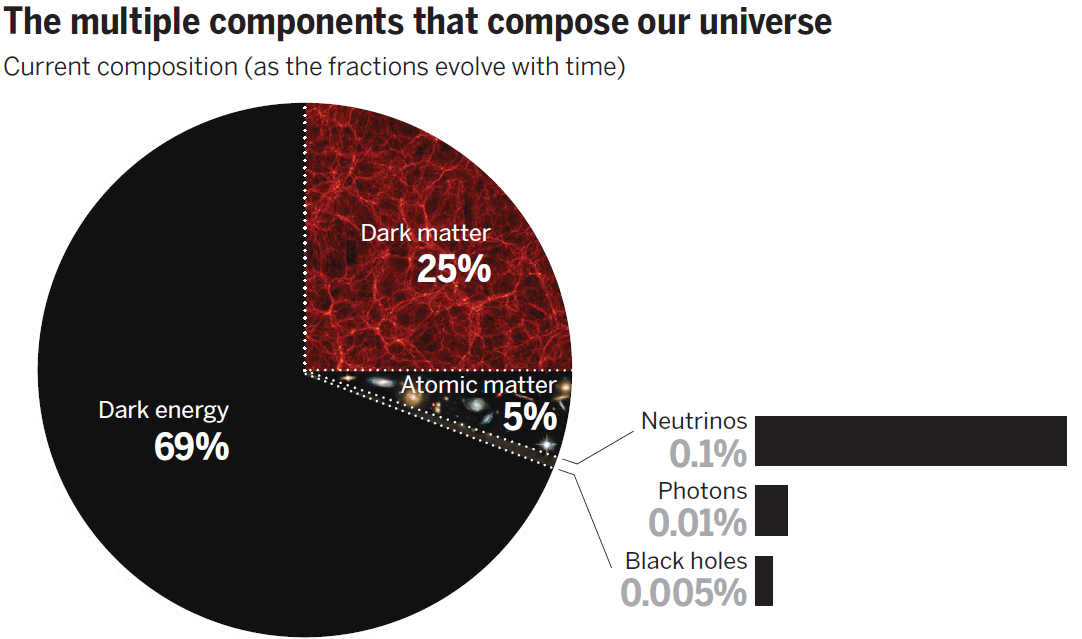
but we don’t much about \(\Lambda\) or CDM!
\(\Lambda\)CDM Cracks
- Tensions between early- and late-time measurements of \(H_0\) and \(S_8\):
- Low neutrino masses?
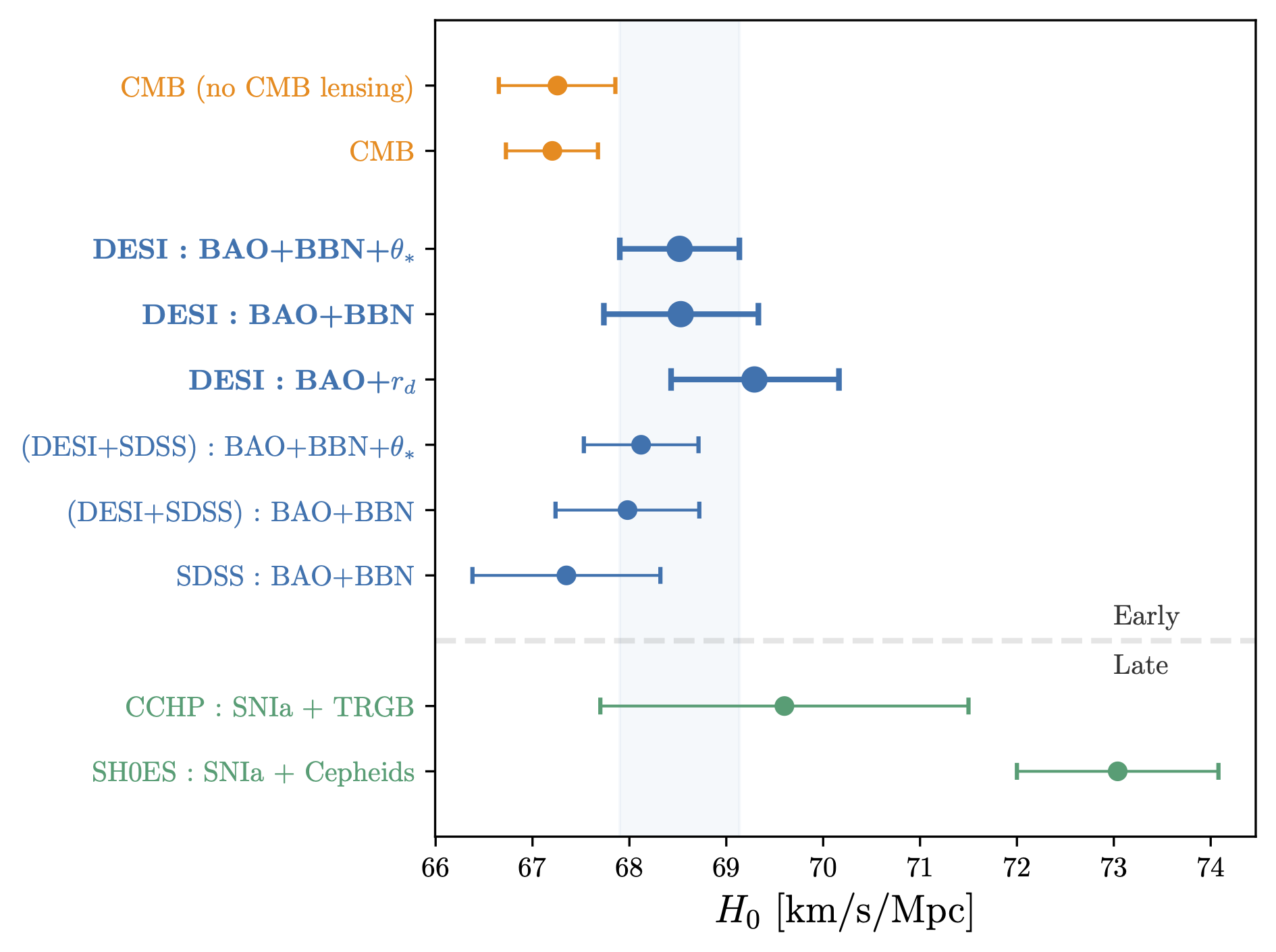
The CMB Beyond Planck
Planck is noise-variance-limited beyond:
- \(\ell > 1800\) in TT, \(\ell > 1100\) in TE;
- everywhere in EE and lensing (\(\phi\phi\)).
CMB experiments filling this niche:
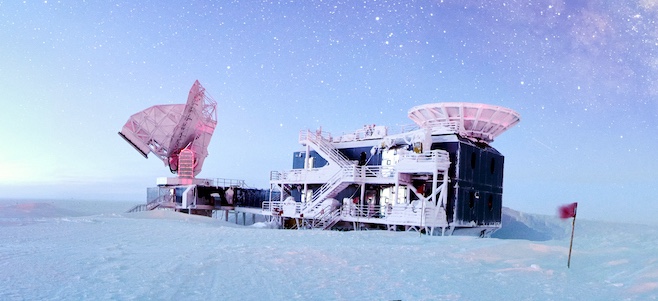
SPT BICEP/Keck
Aman Chokshi
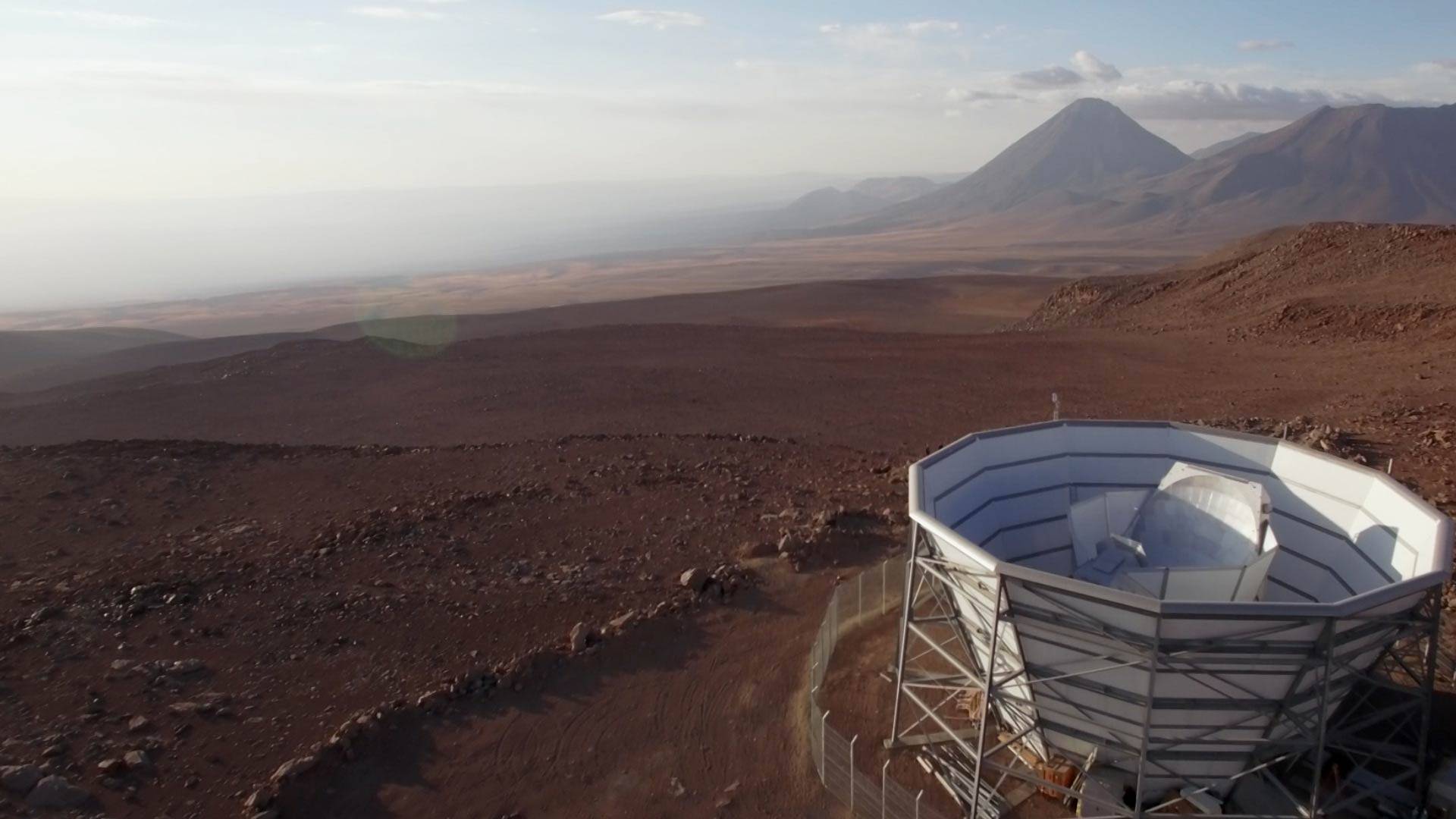
ACT
Debra Kellner
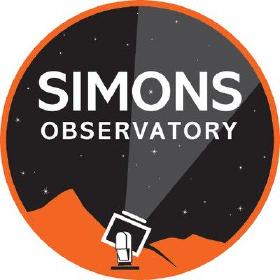
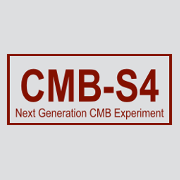
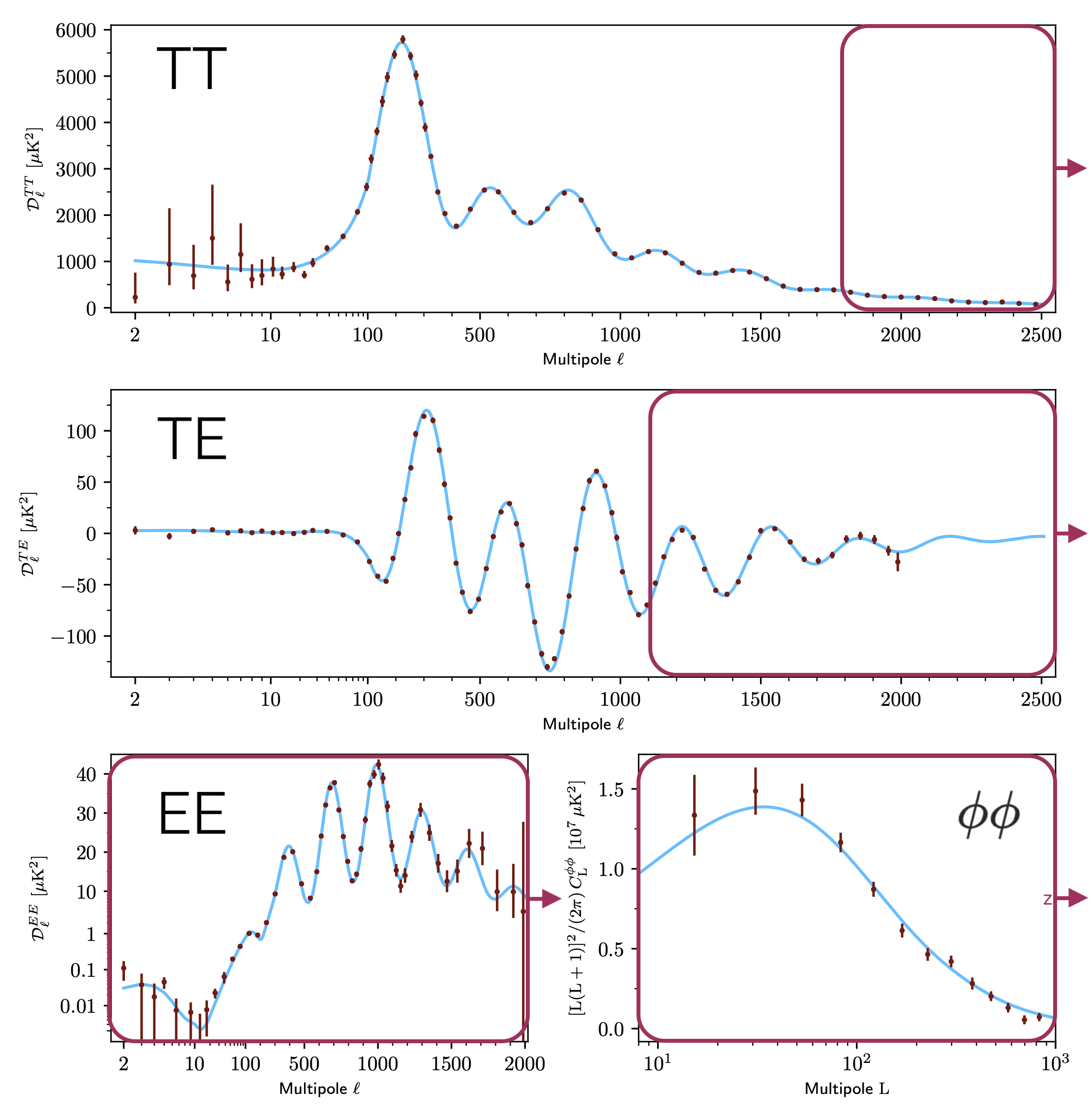
The South Pole
Telescope
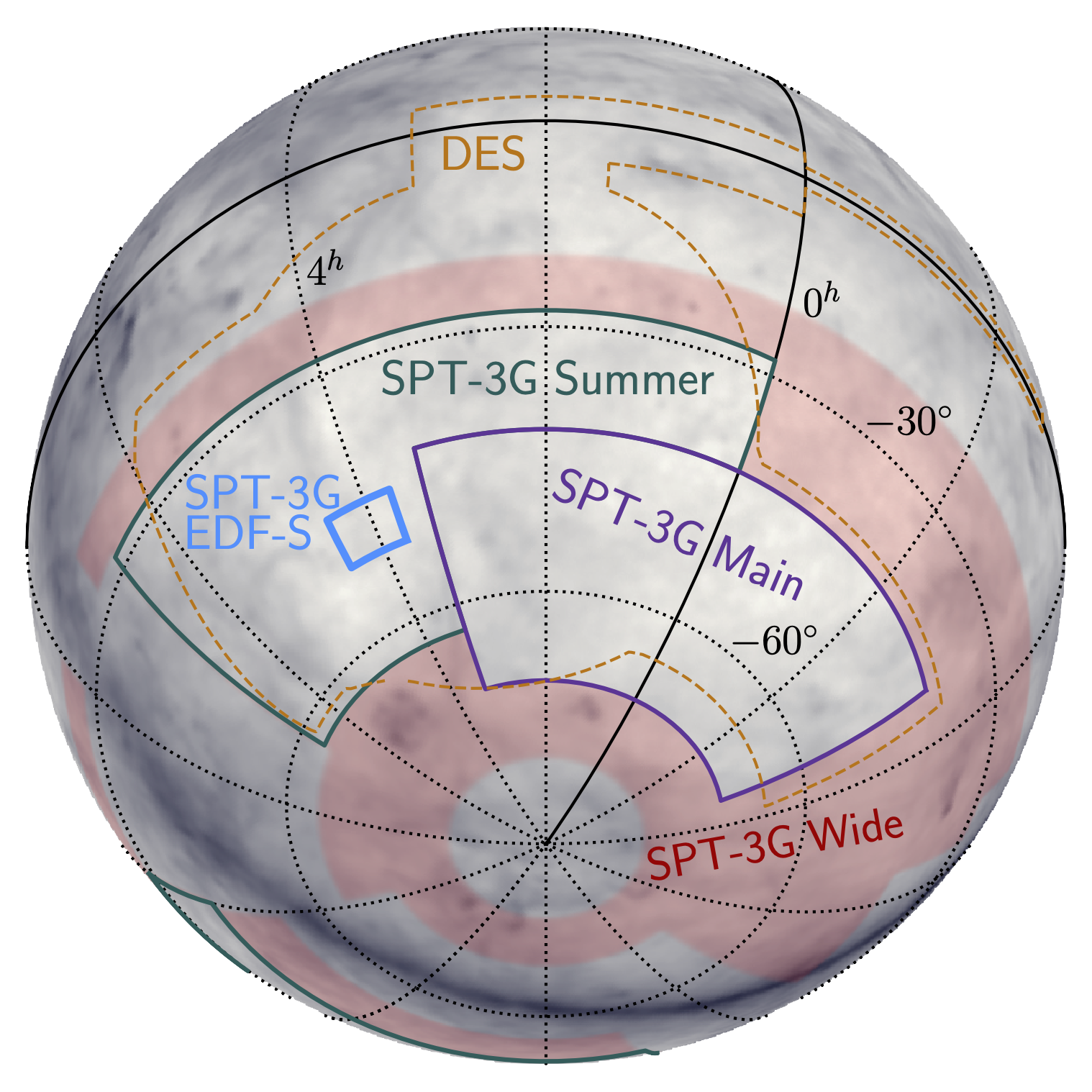
3 bands: 95, 150, 220 GHz
resolution: 1.6, 1.2, 1.0 arcmin
SPT-SZ (2007) SPTpol (2012) SPT-3G (2017)
~1000 detectors ~1500 detectors ~16,000 detectors
Photo Credit: Aman Chokshi
SPT-3G 2019+2020 Analyses
*successful cosmology analyses already published with SPT-3G 2018 data
Kevin Zagorski
2019+2020 Analyses

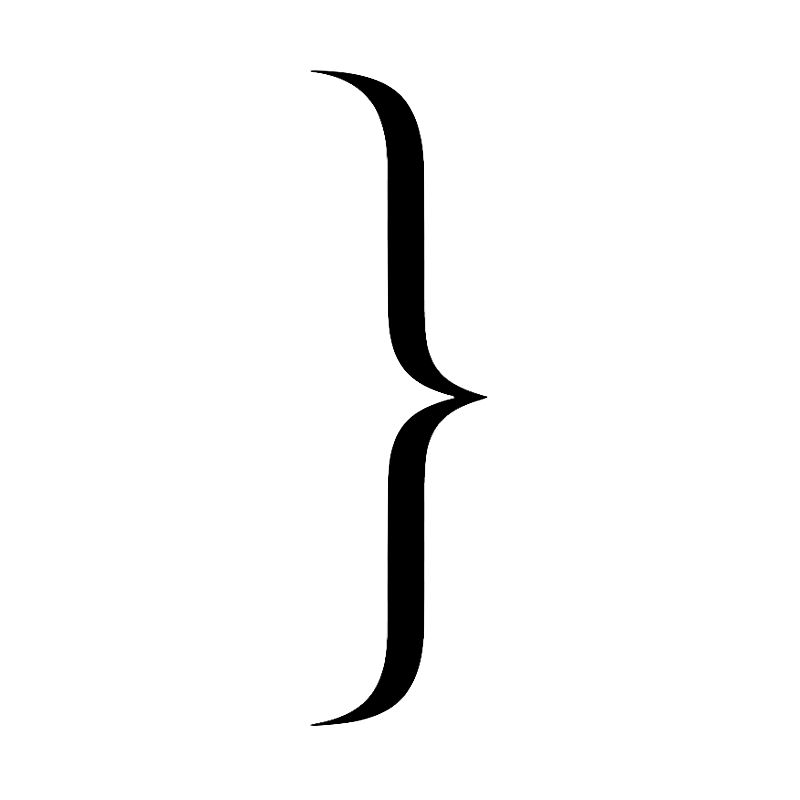
Same 9 maps used by three
independent pipelines:
MUSE: Bayesian joint inference of cosmology, systematics, and pixels
Traditional TT/TE/EE power spectrum
Traditional quadratic estimator (QE) lensing
1. MUSE
Recently accepted! arxiv:2411.06000
- Likelihood publicly available: https://pole.uchicago.edu/public/data/ge25/index.html
Methods in the spirit of
simulation-based inference (SBI).
EE & \(\phi\phi\) bandpowers probe new scales and are in agreement with Planck \(\Lambda\)CDM:
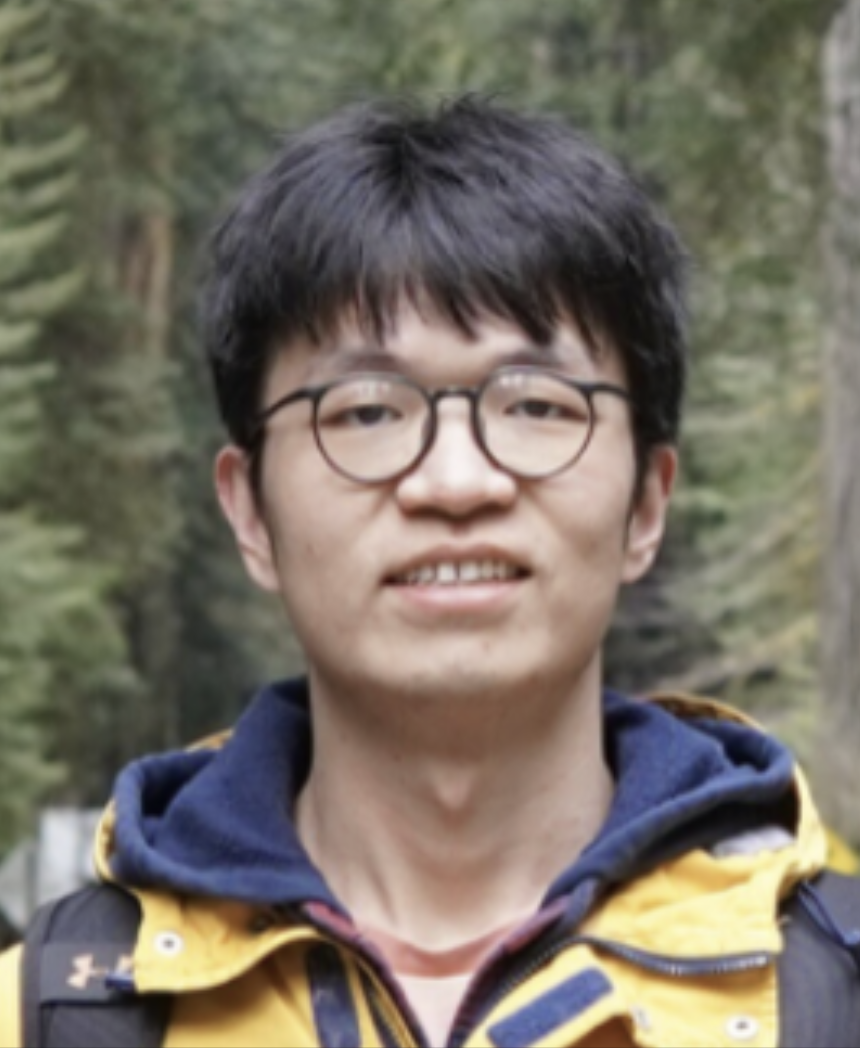

Fei Ge Marius Millea
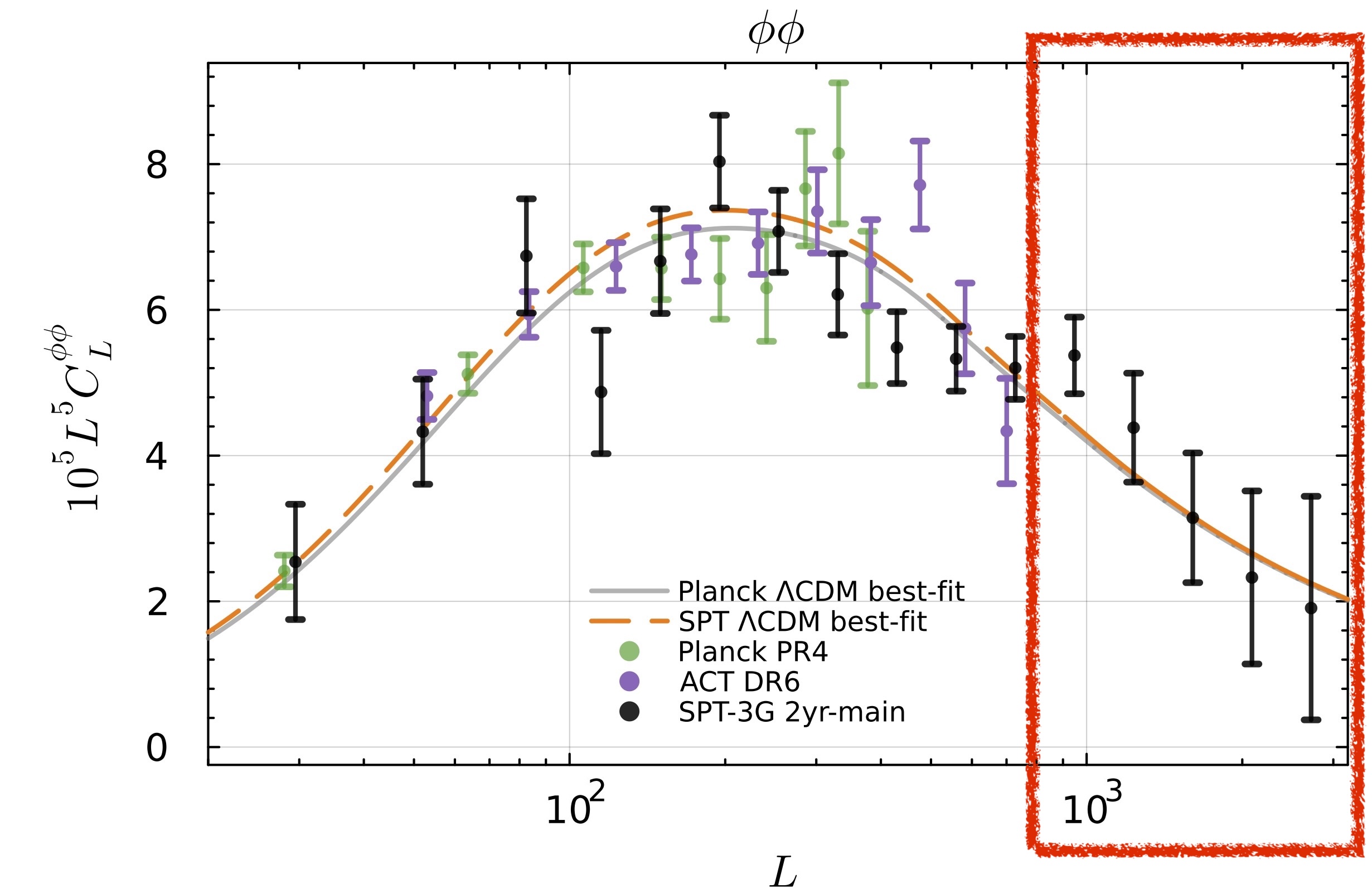
1. MUSE Results: \(H_0\)
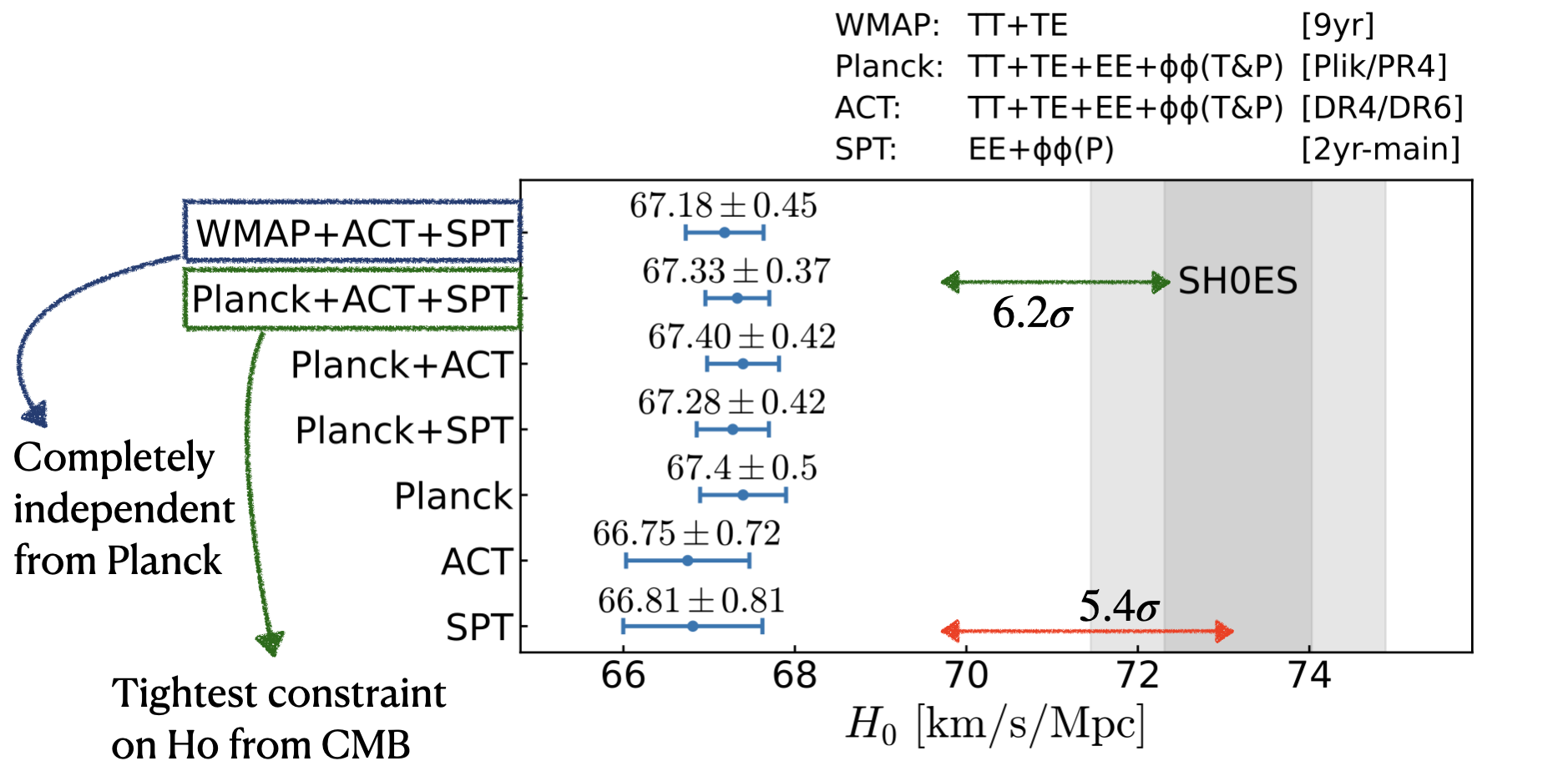
1. MUSE Results: \(S_8\)
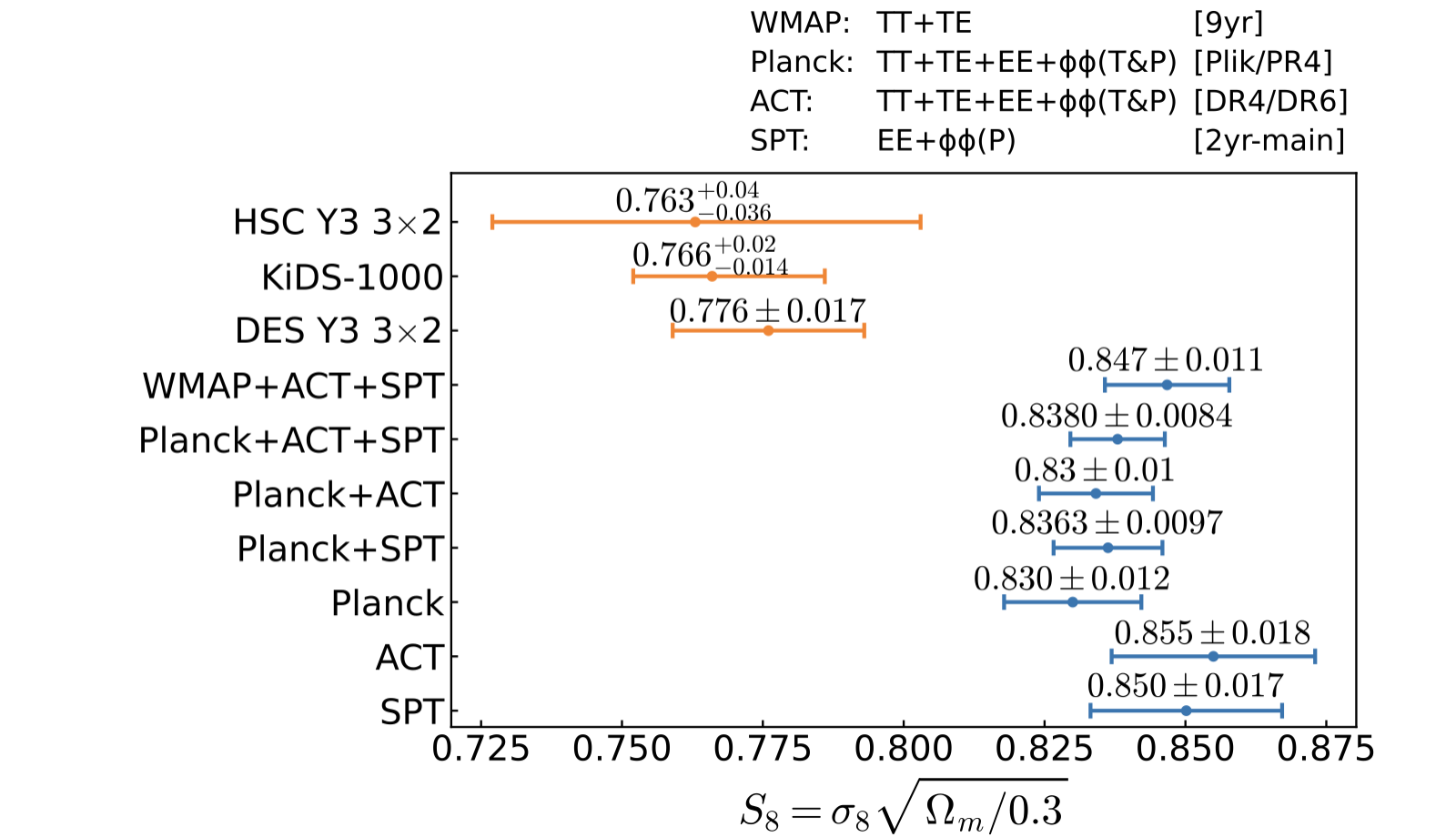
Joint ACT-SPT-Planck \(S_8\)
measurement in the works!
1. MUSE Insights on Structure Growth
Scales and redshifts that
contribute to MUSE constraints:
total and non-linear contributions.
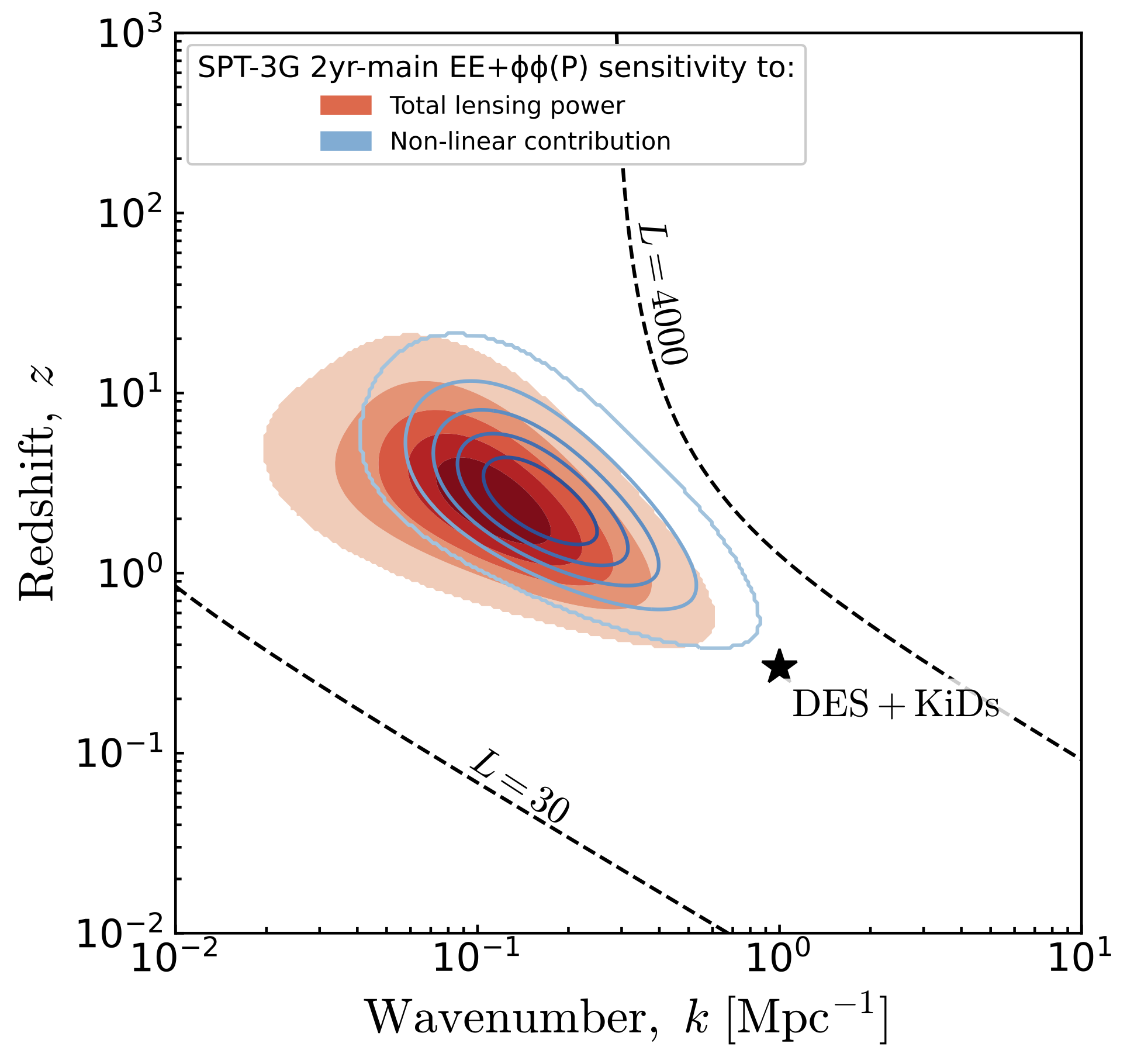
1. MUSE Insights on Structure Growth
\(A_{\rm mod}\) to scale the non-linear matter power spectrum:
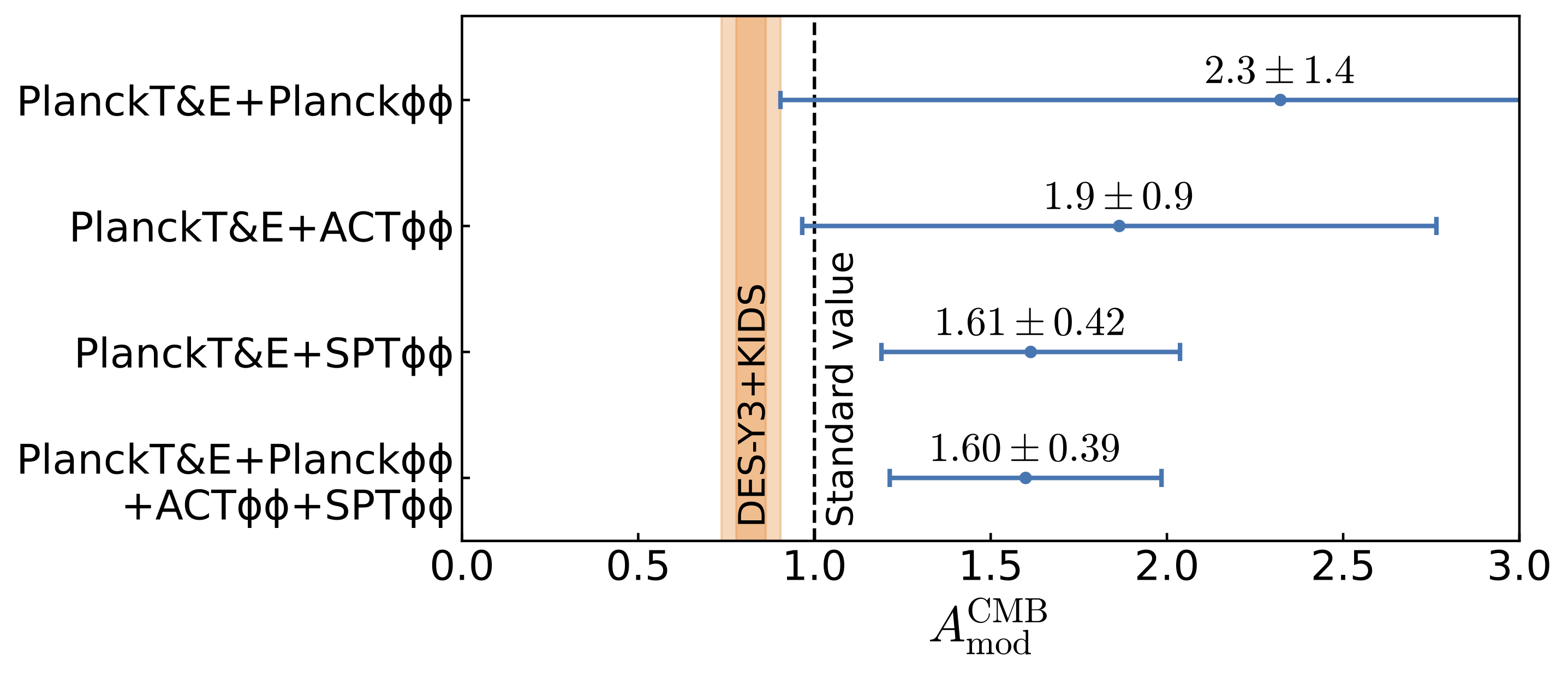
Planck T&E + SPT\(\phi\phi\) gives first \(3\sigma\) detection of
non-linear structure with CMB lensing!
1. MUSE vs. Planck and ACT
Comparison of polarization-only
(EE + \(\phi \phi_{\rm pol}\)) constraints from
SPT, Planck, and ACT:
SPT-3G polarization data is incredible!
but, this isn’t a complete picture of the constraining power of these instruments:
\(\implies\) upcoming SPT TT/TE/EE/\(\phi\phi\)
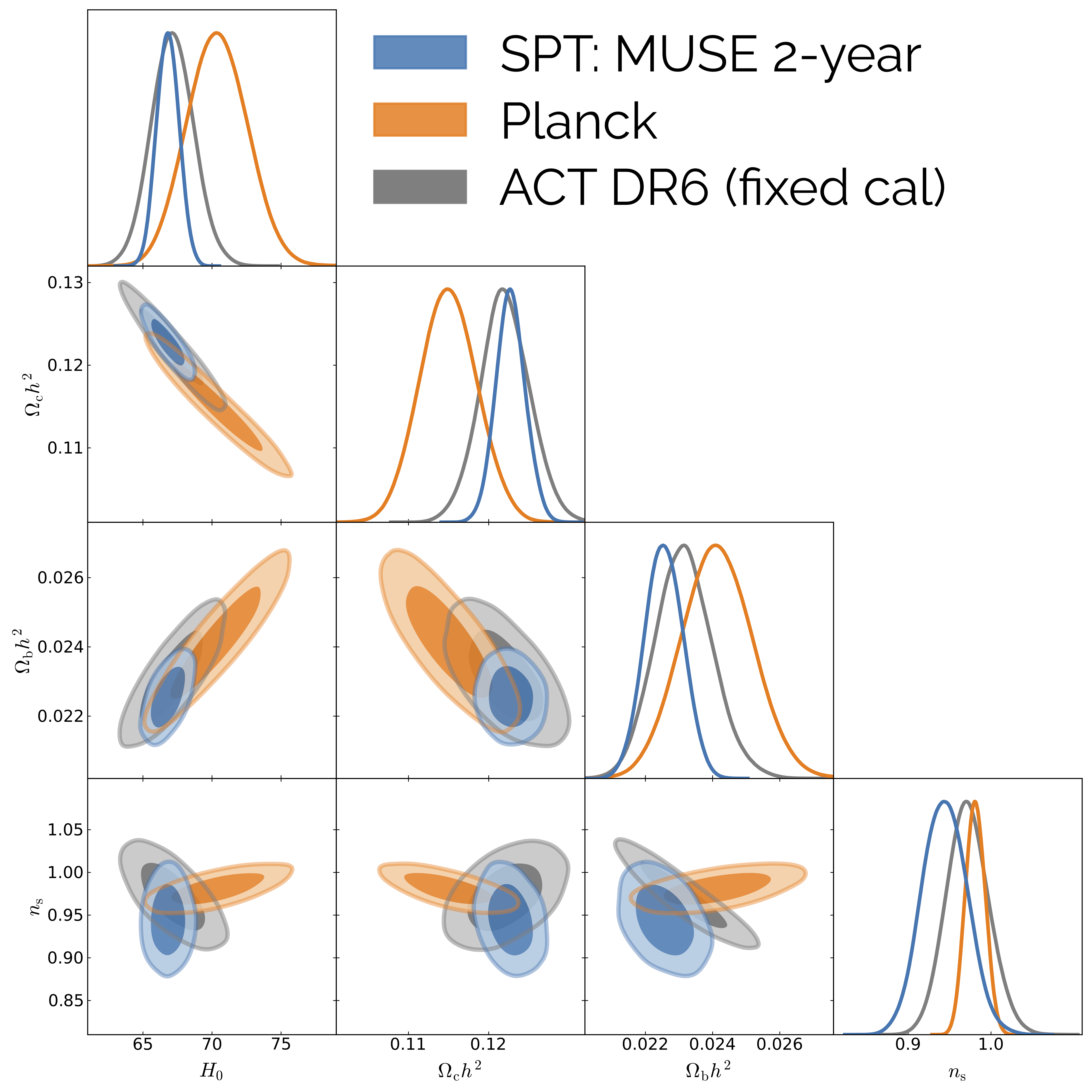
2. Upcoming 19+20: TT/TE/EE
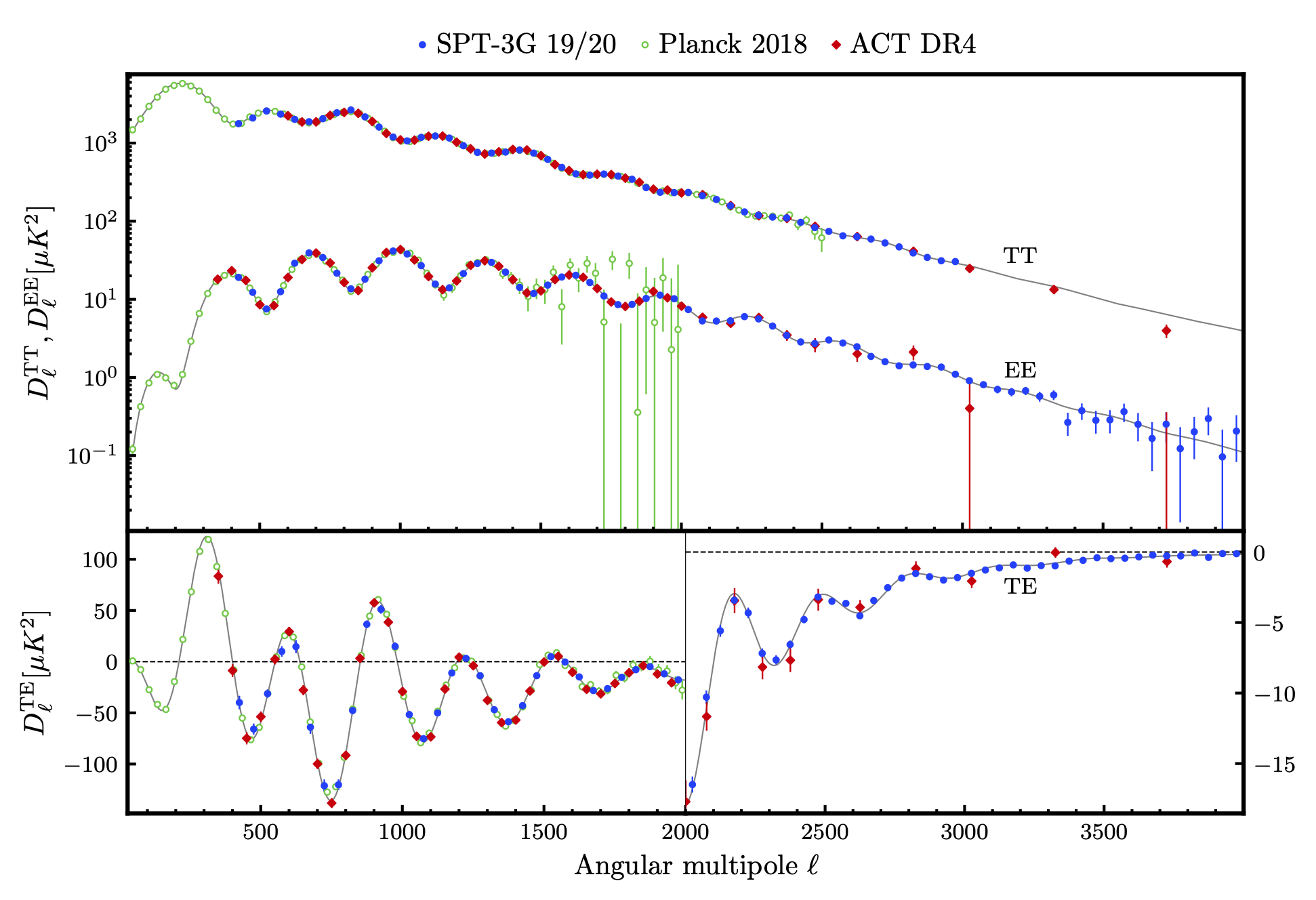


2. Upcoming: TT/TE/EE + MUSE \(\phi\phi\)
Targeting publication this summer.
As a taste, SPT-3G TT/EE/TE + MUSE \(\phi\phi\)
(mock!) vs. ACT DR6, MUSE and Planck.
With the addition of full QE \(\phi\phi\) (see following slides), joint constraints on \(\Lambda CDM\) parameters will be
comparable to Planck!
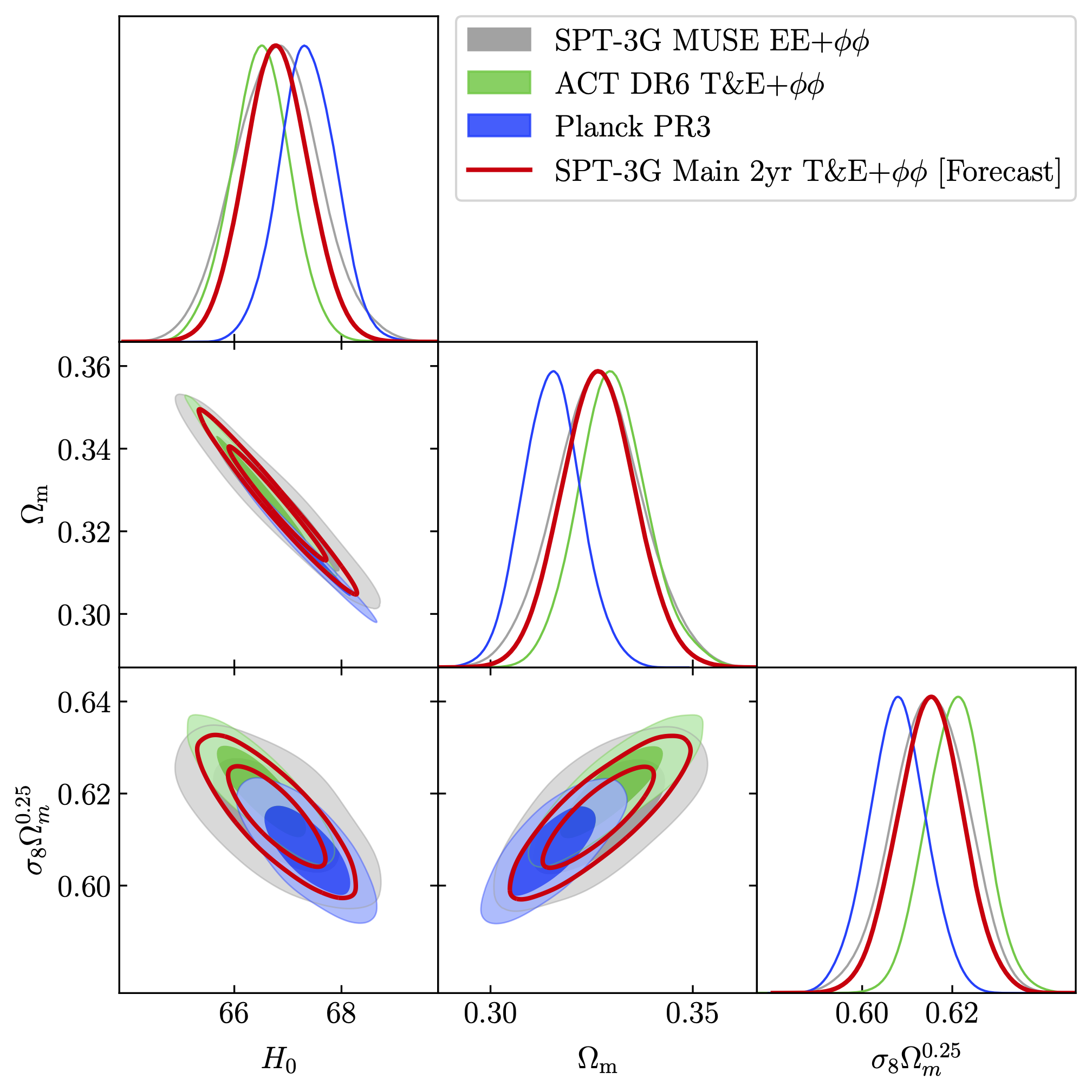
3. Upcoming 19+20: QE Lensing
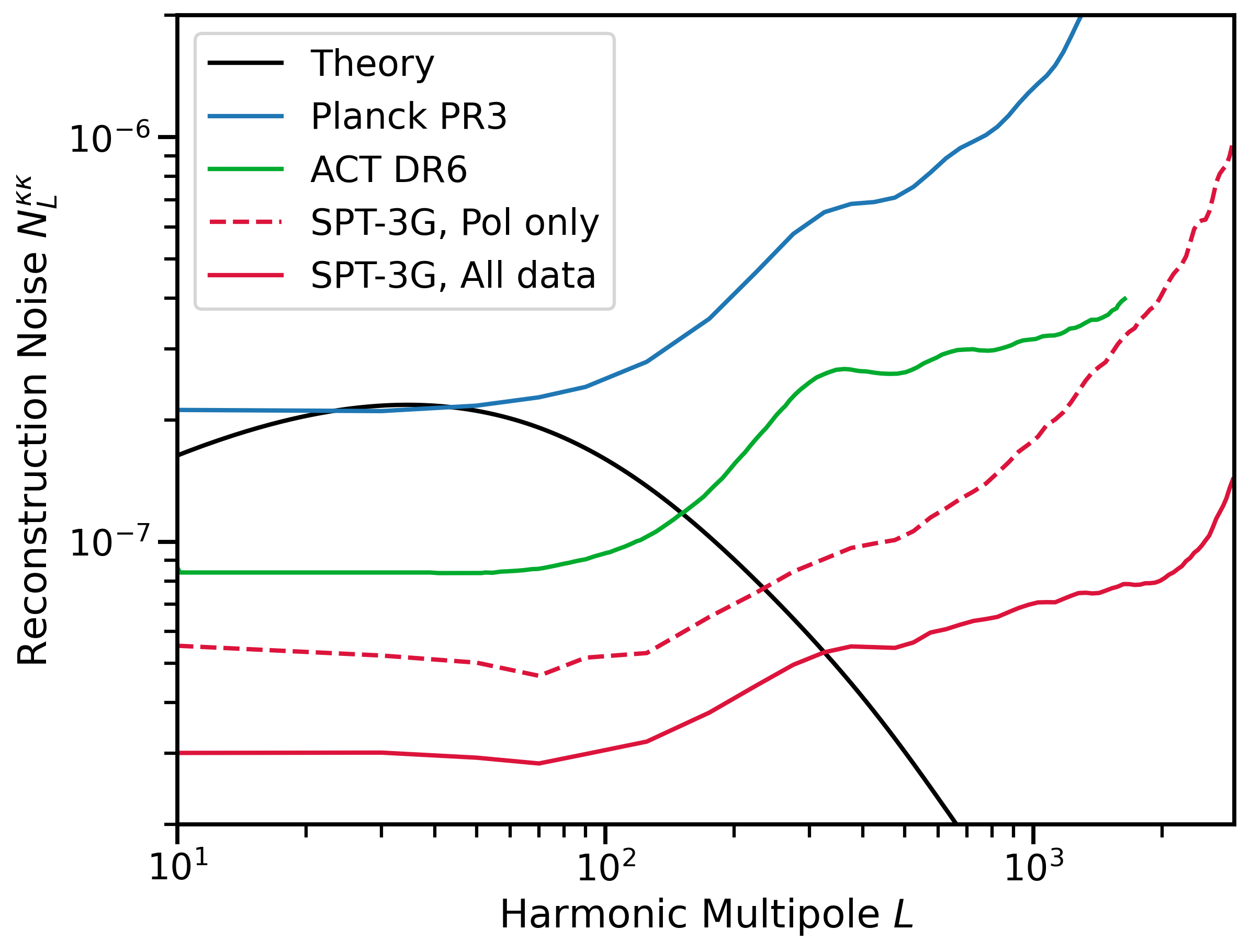




forecast: 1.5% measurement \(\sigma_8 \Omega_m^{0.25}\) from SPT-3G lensing alone!
vs. 2.7% for Planck lensing
3. Upcoming 19+20: QE Lensing
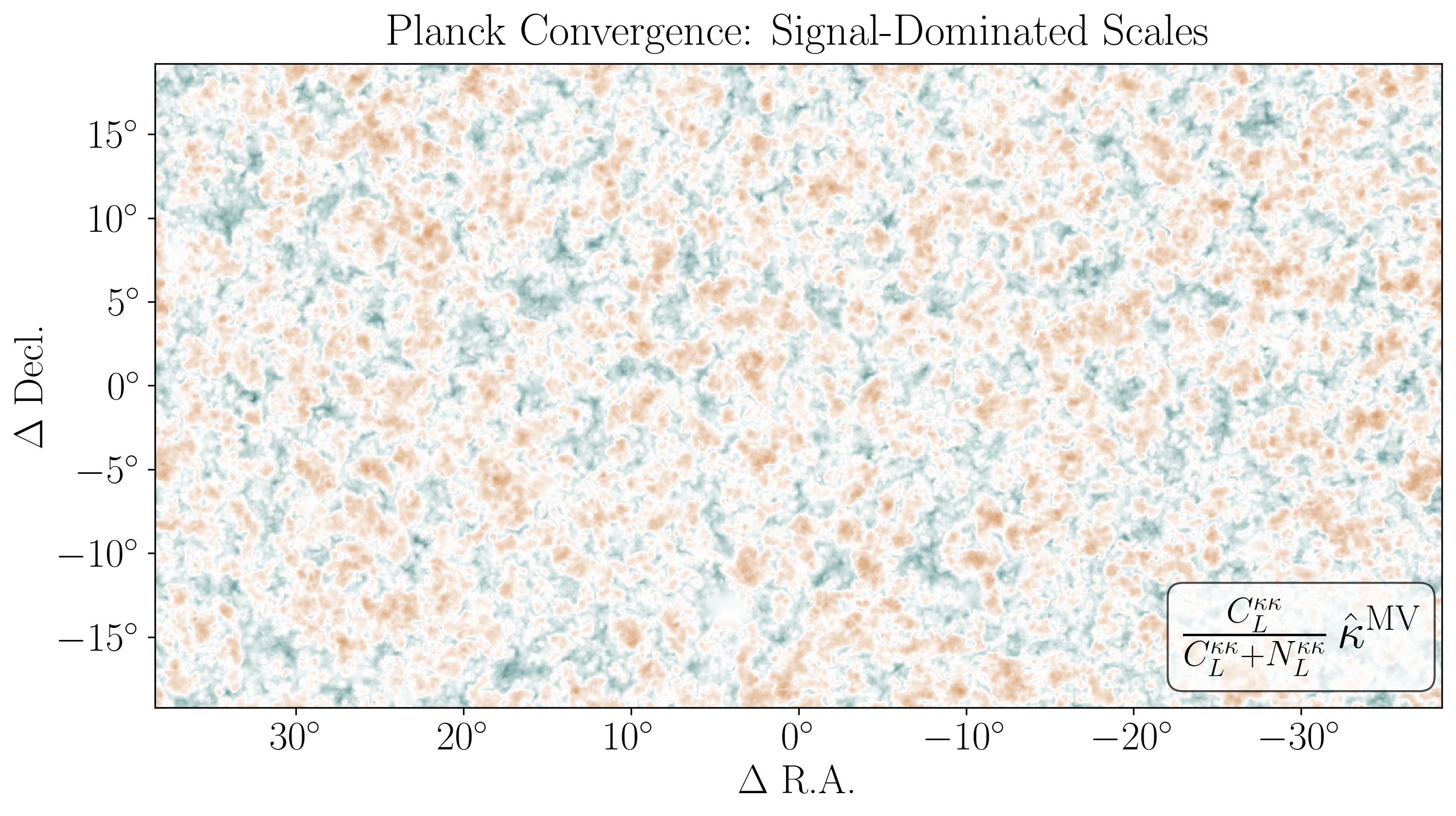
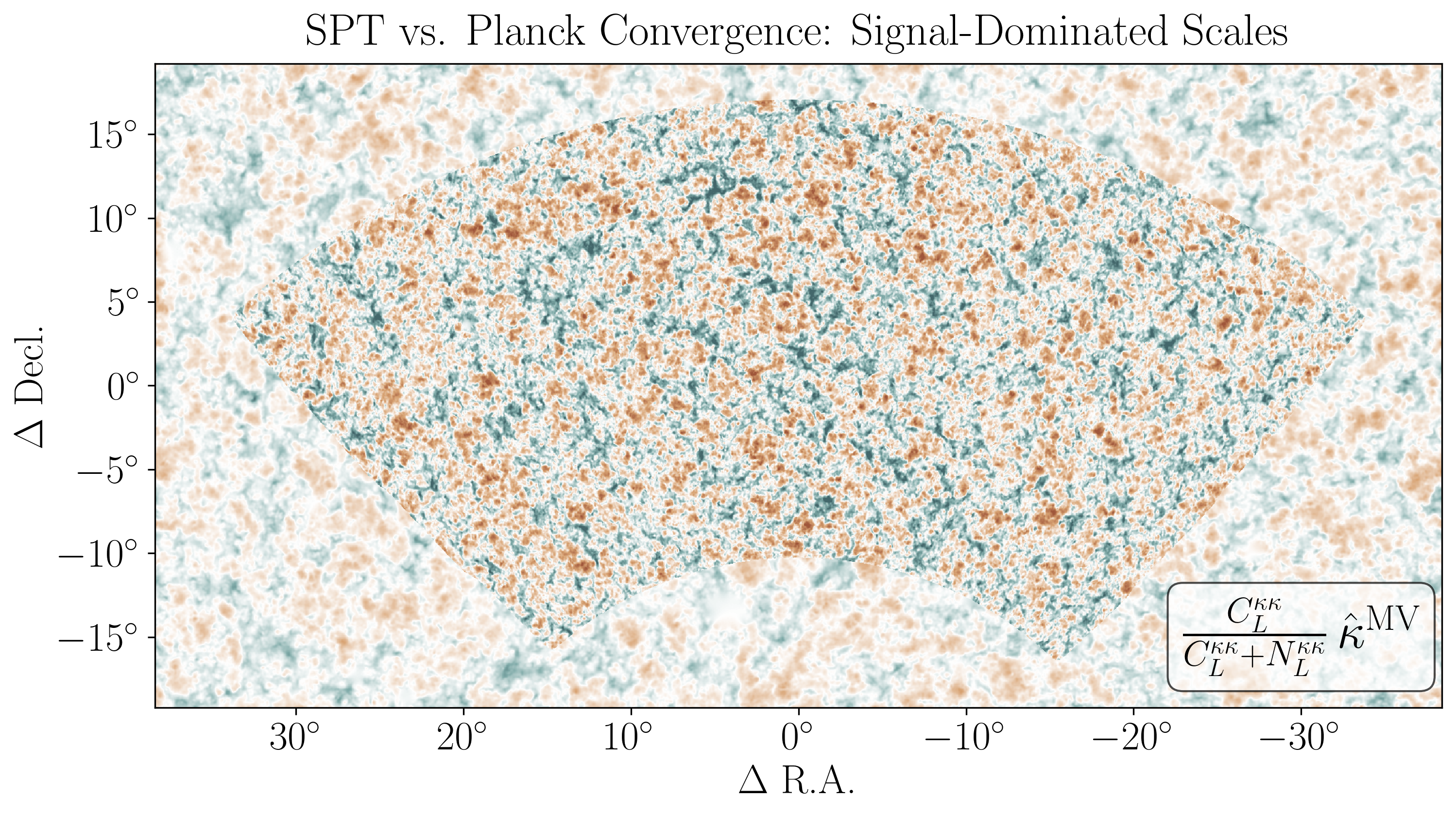
3. Upcoming 19+20: Cross-correlations
SPT-3G lensing: large scales, high \(z\)
(mostly linear)
Cosmic shear: smaller scales, low \(z\)
(mostly non-linear)
Cross-correlation bridges the gap
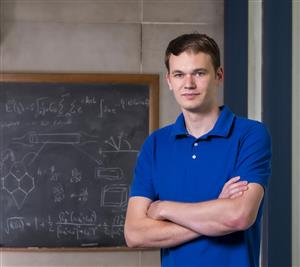
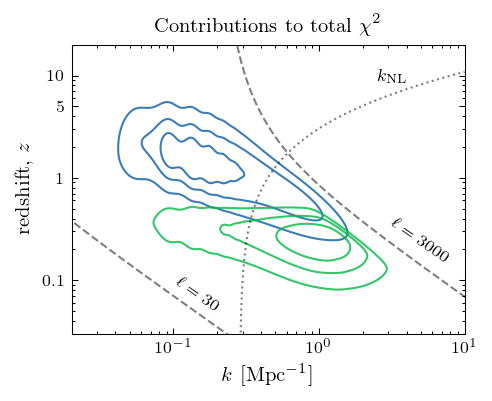
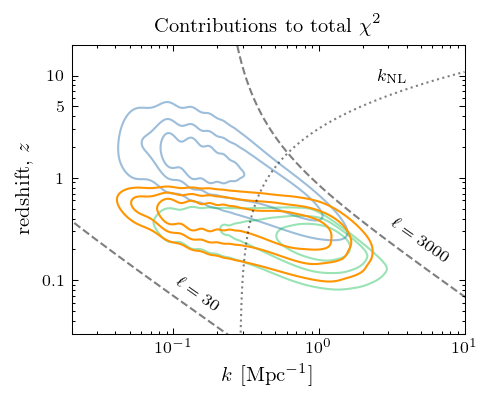
SPT-3G lensing
DES Y3 bin 4
Beyond 2019+2020: the Ext-10k survey
Kevin Zagorski
Beyond 2019+2020: the Ext-10k survey
| Survey | Area (deg²) |
Depth (\(\mu\)K-arcmin) |
|---|---|---|
| Main | 1,500 | 2.1 |
| Summer | 2,600 | 9 |
| Wide | 6,000 | 12 |
Ext-10k = Main + Summer + Wide
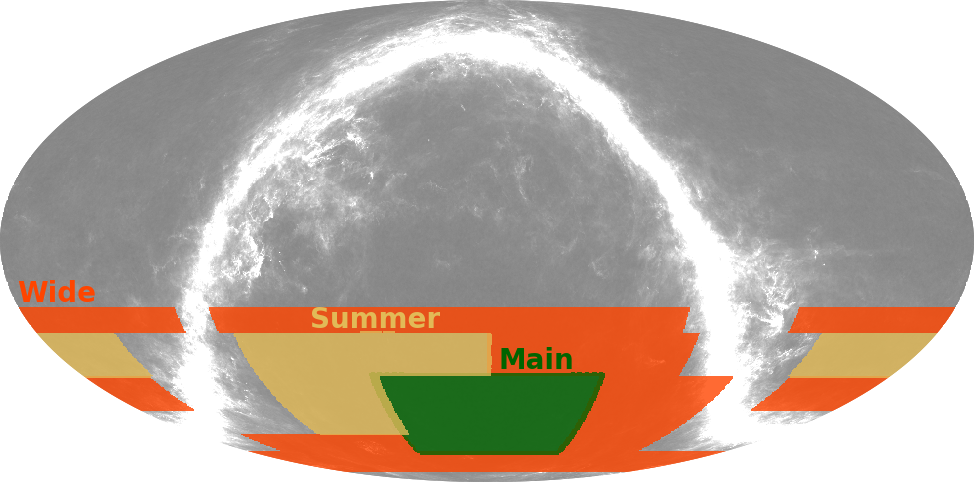

Combined Ext-10k survey will improve on Planck constraints by as much as:
2x for \(\Lambda\)CDM parameters, 3x for single-parameter extensions!
Credit: Federica Guidi
Cosmology from CMB Secondaries
Foreground signals also contain rich cosmological information.
SPT has provided the best constraints on the Epoch of Reionization to-date from kinetic Sunyaev-Zel’dovich 4-pt:
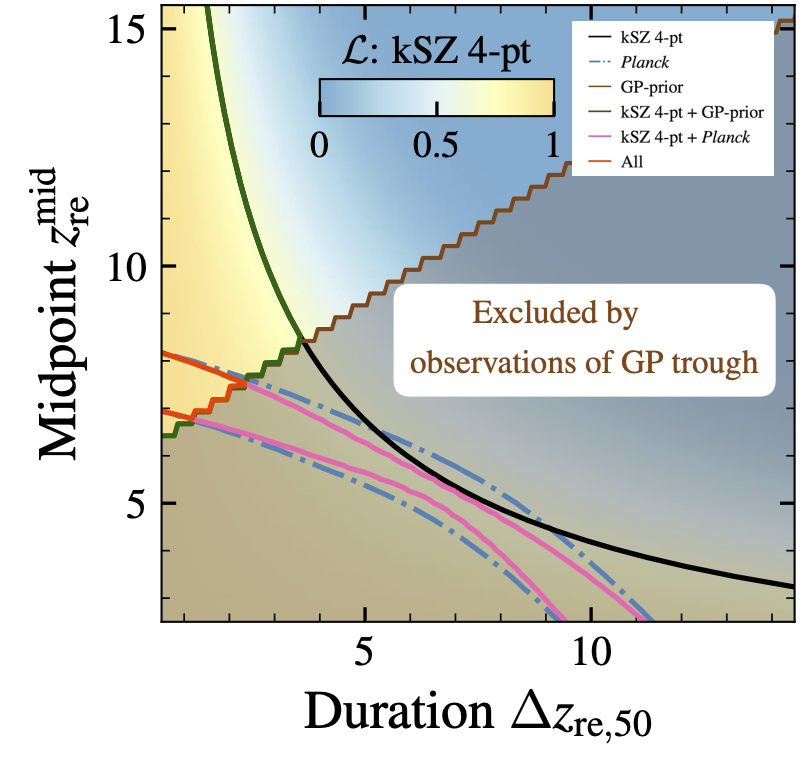
Raghunathan et al. (2024)
Cosmology from CMB Secondaries
Foreground signals also contain rich cosmological information.
100 deg² SPT-deep cluster catalog on arXiv as of last week: arXiv:2503.17271
Looking forward to cluster cosmology with SPT-3G + Euclid!
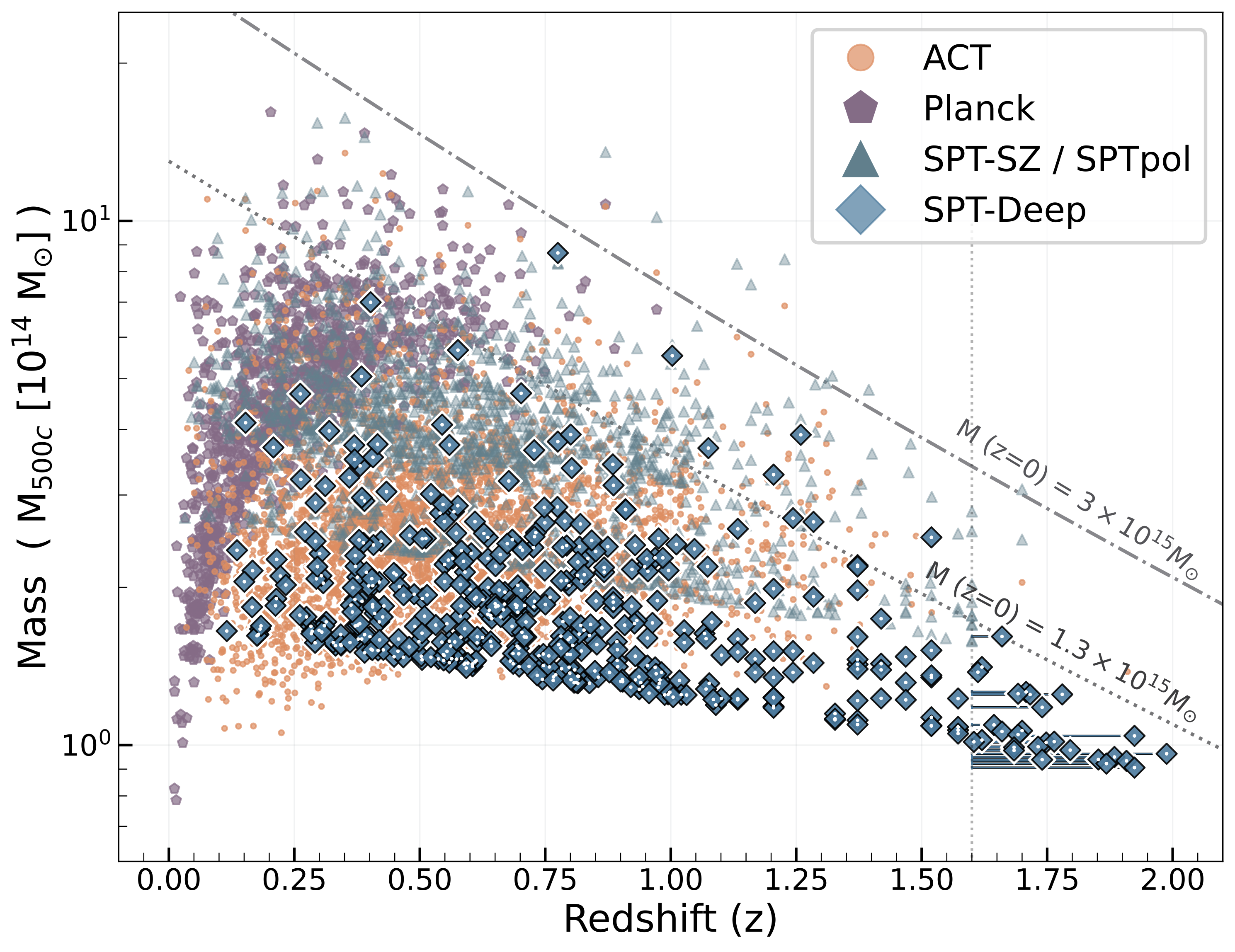
Kornoelje et al. (2025)
SPT-3G and Euclid
Kevin Zagorski
SPT-3G and Euclid
Joint analyses of SPT-3G and Euclid data will be incredibly powerful!
- DR1 largely overlaps SPT-3G Main and Summer fields.
SPT has conducted dedicated observations
of Euclid Deep Field South (EDFS)
and is planning a release of:
- temperature maps & analysis products
- emissive source catalogs
- cluster catalogs.

SPT-3G and Euclid
Joint analyses of SPT-3G and Euclid data will be incredibly powerful!
- DR1 largely overlaps SPT-3G Main and Summer fields.
Check out Melanie Archipley’s talk tomorrow at noon to learn more about our upcoming data release and other SPT science!
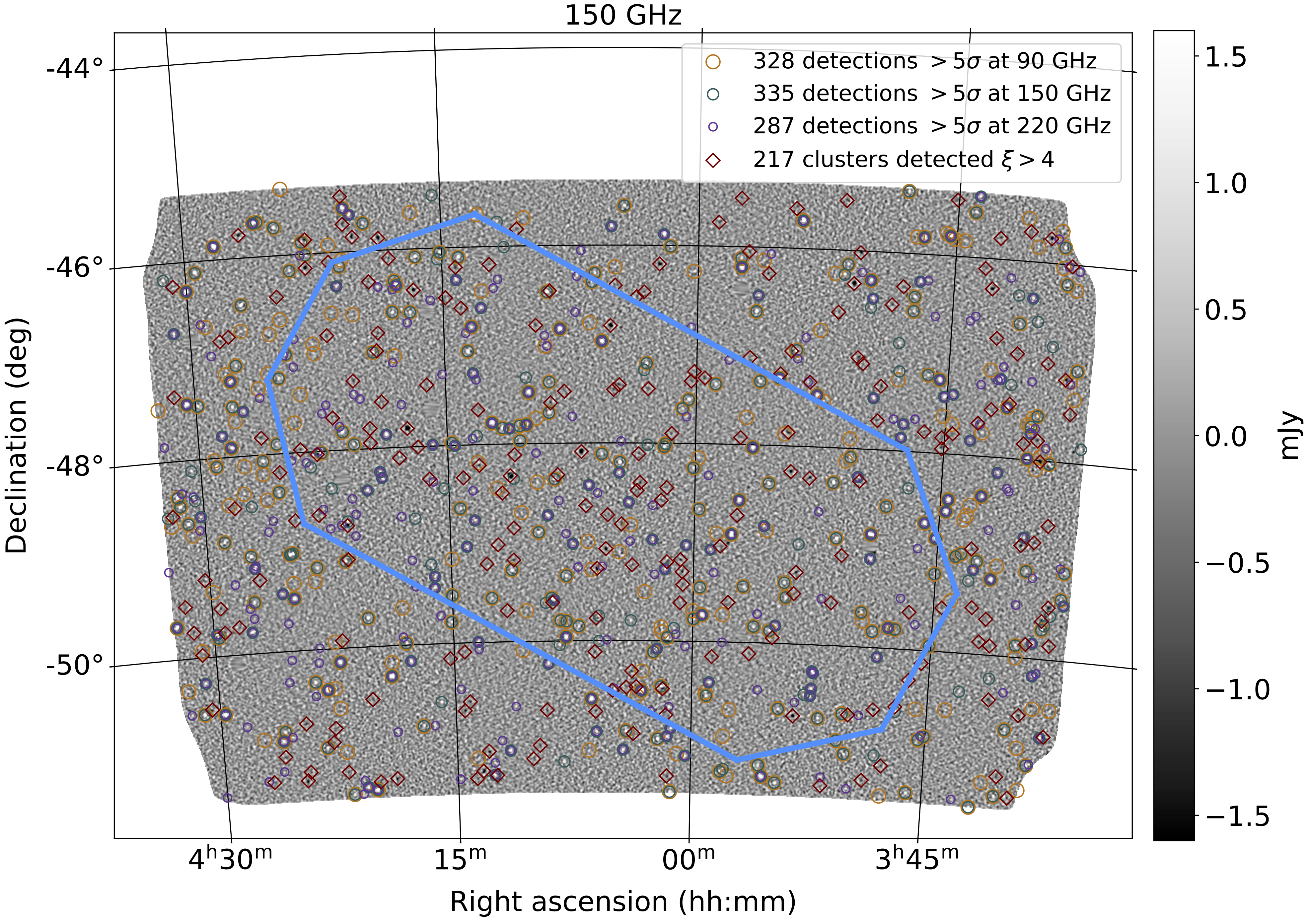
SPT-3G and Euclid
I am working on EDFS lensing maps to be cross-correlated with Euclid Q1 data:
Will provide useful pathfinding for Euclid DR1 \(\times\) CMB analyses.
Euclid-CMB \(6 \times 2\)pt
will be among Euclid’s most powerful cosmological probes.
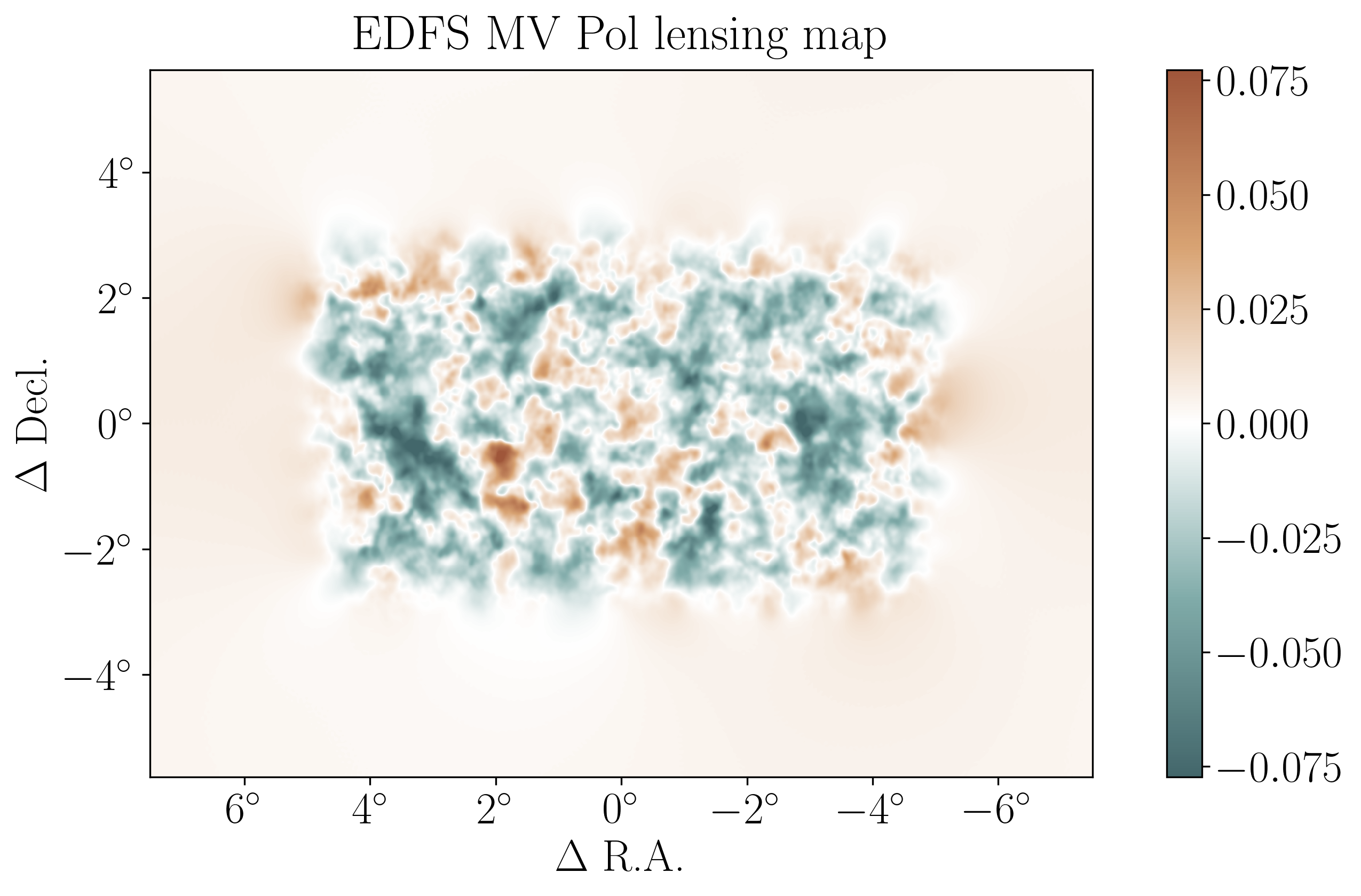
Summary & Looking Forward
The CMB still has a lot to tell us about the Universe:
- small scales, polarization, & lensing.
SPT-3G Main 2019+2020:
MUSE polarization-only results probe new scales & are consistent with \(\Lambda\)CDM
coming temperature+polarization constraints will be comparable to Planck!
- SPT-3G Ext-10k will improve on Planck constraints by as much as
2x for \(\Lambda\)CDM parameters, 3x for single-parameter extensions.
- Joint SPT-3G + Euclid cosmology constraints will be incredible!
Thank You!
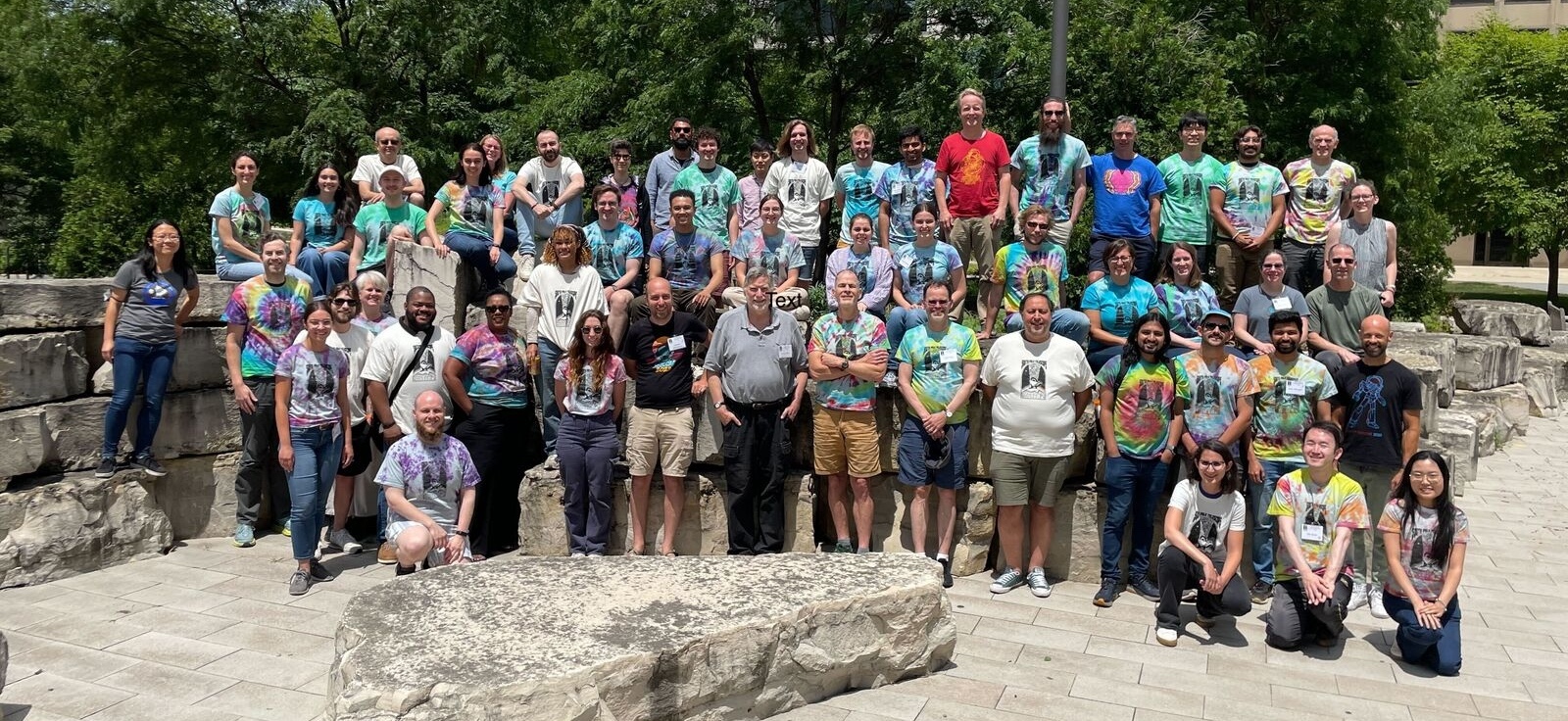
Backup
Kevin Zagorski
MUSE Algorithm
Marginalize over CMB \(f\) and lensing \(\phi\)
maps/pixels to determine parameters \(\theta\):
\[ \mathcal{P}(\theta \mid d)=\int \mathrm{d} f \mathrm{~d} \phi \, \mathcal{P}(f, \phi, \theta \mid d) \]
Algorithm similar to simulation-based inference (SBI) with semi-analytic compression statistic.
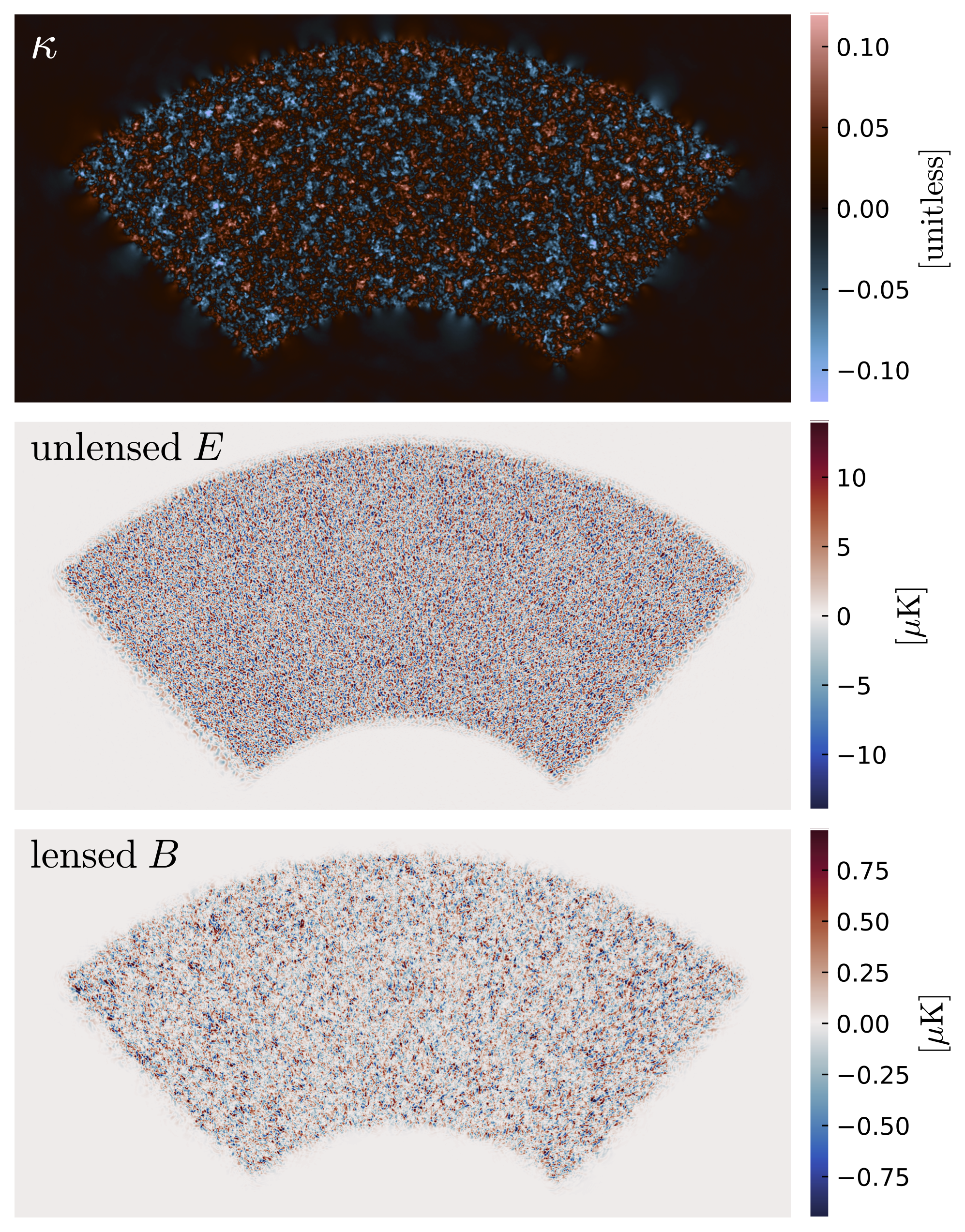
MUSE Blinding
Blinded analysis with post-unblinding beam change:

- Evidence for different beam in polarization.
- constrained by inter-frequency agreement.
- Shifted cosmological parameters by up to 1\(\sigma\) (not necessarily closer to Planck).
MUSE Blinding
Similar slope seen by ACT DR6:
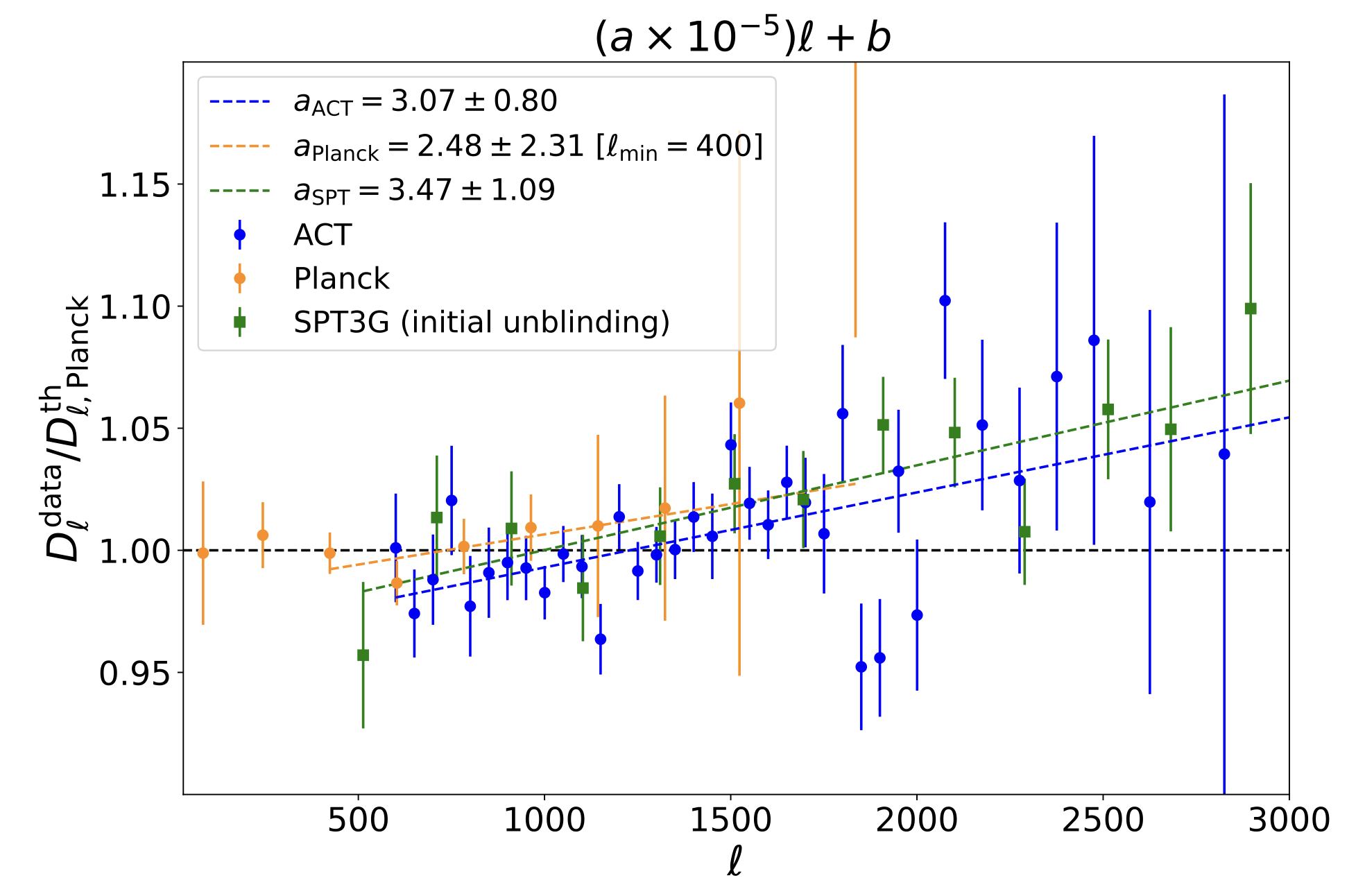
MUSE Insights on \(A_{\rm lens}\)
Decreasing neutrino mass enhances structure (measured by \(\phi \phi\)).
CMB prefers more lensing power than predicted by \(\Lambda\)CDM given BAO.
\(\implies\) low \(\sum m_{\nu}\) when allowed to vary.
\(A_{\rm recon}\): scales lensing power used to predict lensed CMB power spectra
\(A_{\rm 2pt}\): scales lensing power used to predict lensed CMB power spectra
\(A_{\rm lens}\): if \(A_{\rm recon} = A_{\rm 2pt}\)
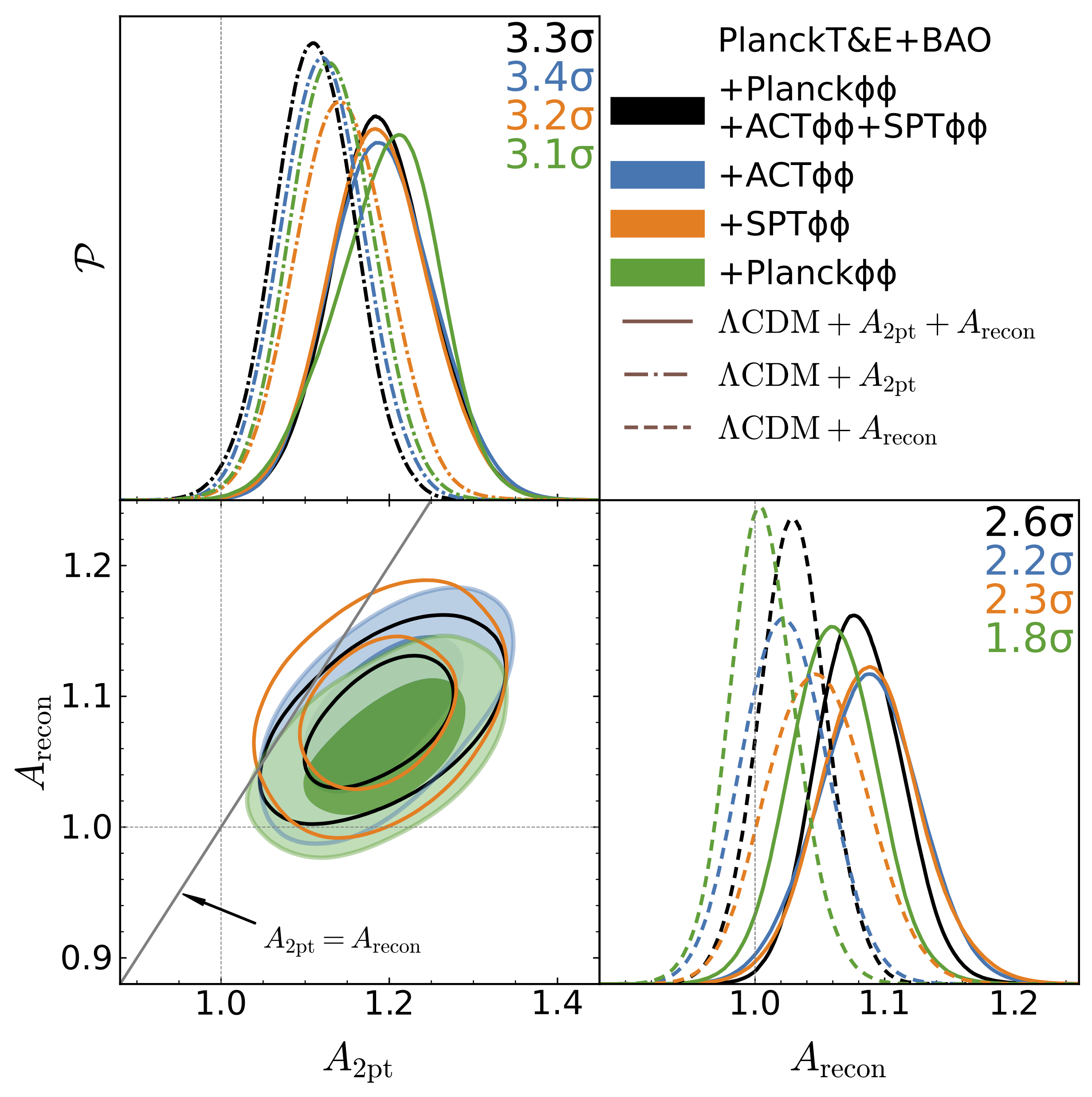
Cail Daley | ESLAB Euclid Symposium | March 25, 2025
